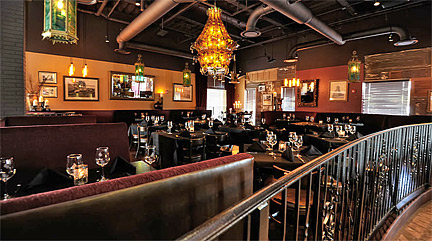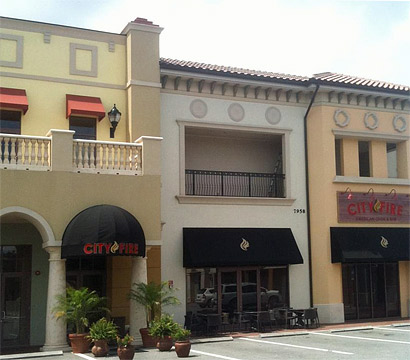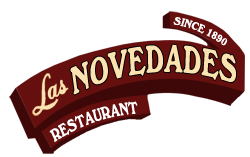 |
Formerly the great competitor to the Columbia Restaurant in the 40s, 50s and 60s, Las Novedades Restaurant's ownership history involves no less than three men named "Manuel" and direct connections to the Columbia, along with family ties to another great Tampa restaurant--Spanish Park. At Las Novedades, Chef Jose Martinez and his Pompano Papillote set a standard of excellence.Novedades, the plural of novedad, means news, newness, new situation, novelty, or change (in a thing or person.) |
|
Early History - The Manuel Menendez Years Various sources indicate that Las Novedades Spanish restaurant had its beginning in 1890 with "Manuel (Canuto) Menendez" when he opened the first Spanish restaurant in the tiny village of Ybor City. The cafe was located on the north side of the street at 1418 7th Ave., near the middle of the block between 14th and 15th St. and was a favorite rendezvous for the pioneer cigar makers of the Sanchez y Haya Cigar Factory located across the street.
According to the historical
marker, in November of 1891 Las
Novedades was destroyed by fire and reopened the following year. |
|
|
This 1889 map shows the block of 7th Ave. between 14th and 15th streets before the establishment of Las Novedades. The north side of the street was dominated by the Hotel de la Havana at 15th St. On the south side of 7th was the Sanchez y Haya cigar factory |
|
|
|
7th Avenue in 1892 This 1892 Sanborn Fire Insurance map of Ybor City shows the 1400 block of 7th Avenue. All the structures on the north side of the block which appeared on the 1889 map, including the Havana Hotel, appear to have been replaced by different structures, possibly due to the fire mentioned on the historical marker. The red rectangle marks the location of Las Novedades cafe. A grocery store and a dwelling were located on the corner. Yellow shading indicates wood frame structures. Notice two structures were in the process of being built, and another section on the north side marked off as "to be built." The number written in the corner of each structure shows how many floors the building had. |
|
Rough Riders at Las Novedades
Cafe
In 1898, the most colorful troops to arrive in Tampa during the Spanish-American War were Col. Teddy Roosevelt’s Rough Riders, a motley crew of frontier types with names like Cherokee Bill and Rattlesnake Pete, oddly mixed with Eastern bluebloods such as tobacco heir P. Lorrilard Ronalds and William Tiffany. Their first "action" in Tampa was when, to the astonishment of customers and staff, a squad of them galloped right into Las Novedades cafe and ordered Arroz Amarillo con Pollo (Yellow Rice and Chicken) from their saddles.Ironically, the troops were in Tampa in preparation to go to war against the country whose culinary creation they had just enjoyed. Whether it was done in symbolism, to just plain show off, or only because they were hungry, it is not known, but Menendez, who had recently began offering the tasty dish, ignored the damage and cheerfully treated the "liberators" to a free round of drinks. This escapade was dubbed by Ybor City locals as The Charge of the Yellow Rice Brigade.
|
|
|
|
Las Novedades Yellow Rice & Chicken Recipe
In her cookbook,
Clarita Garcia says this recipe is authentic, from the country of its
origin, Spain. It was the same recipe used in the restaurant without
change since 1890 when Las Novedades was only a small, unknown cafe. |
||
|
|
Cut fryers in quarters. In a large skillet, heat oil and sauté chicken slowly until just pale golden in color. Remove to casserole with cover (earthenware is preferable.) To the drippings in skillet, add the onion and green pepper. Sauté until transparent. Add the tomato, garlic, lemon juice, bay leaf, salt and hot sauce. Mix well and cook until mushy. Dissolve toasted saffron* in the 1 cup hot chicken broth* and combine with ¼ cup wine. Pour into skillet, add the parsley and stir well. Pour mixture over the chicken in casserole. Cover and cook until chicken is tender (about 15 minutes.) Add rice and stir to distribute evenly in casserole. Add the 2¼ cups chicken broth; stir carefully once; bring to a boil, cover and place in preheated 325 degree oven for 20 minutes. |
|
*See
recipe for chicken broth and toasted saffron |
||
|
Remove from oven. Garnish with peas and pimiento strips. Sprinkle generously with dry white wine (quality drinking wine, not cooking wine.) Place parsley bouquets here and there for color. Cover and allow to stand 15 minutes before serving. Yields 6 servings. Note: For variety, instead of wine try 6 oz. of beer. In this case, do not use wine in the cooking at all. When the casserole is removed from the oven, pour the beer over the rice, cover and allow to stand from 20 to 30 minutes before serving. The heat will evaporate the alcohol content of the beer and only the taste will remain.
|
||
|
|
||
|
Place your cursor on the photo to see buildings identified
Read about Robert Mugge, prominent Tampa citizen and owner of the Bay View Hotel, here at Tampapix. |
|
|
7th Avenue in 1899 |
|
|
|
|
| Sanchez & Haya Factory,
1898 This photo from the Tony Pizzo Collection has a comment stating "The little house in the corner of the lot was used by a watch-maker named Otto Kammerer." Compare to the 1899 map above which shows a small 1-story wood structure on the corner, marked "Jeweler." Further evidence that this is the factory on the corner of 7th and 15th is that the building in the photo is a 2 1/2 story wood structure (which is noted on the 1892 map.) Also, the small porch jutting out on the north side of the building can be seen in this photo at the far right and the open balcony on the south side of the building on the map can be seen at the left of the photo. |
|
|
1900 Census of Otto Kammerer, watchmaker located on the southwest corner of 7th Avenue and 15th St.
Their 1910 Census in Tampa also shows a 33 year age difference between Otto and wife Emma. On the 1910 census, Otto is "Frederick O. Kammerer" and has become a farmer. The 1910 Census recorded marriage number in addition to years married. Emma was Otto's 2nd wife. 18 year old Yorick was a cigar maker in 1910.
|
|
|
1900 Federal Census Record of Manuel Menendez
|
| This image of the 1900 census in West Tampa shows Manuel Menendez was living in West Tampa at 60 Grace Street, which was in an area of 12th Ave. and a street named Bustillo. In 1900, the Bustillo y Diaz cigar factory was located at Grace St. and 13th Ave, which today is a block north of Cypress near North Blvd. Manuel's occupation was "Restaurant and Rooms", as evidenced by three boarders in the same dwelling with himself listed as the head. Menendez was born in Spain in April of 1863 and was age 37. Of significance here is that he gave his year of immigration as 1892 and said he had been in the US for 8 years. If this information is correct, it puts in doubt the story that he opened Las Novedades Cafe in 1890, unless it was originally started in 1890 by someone else. He was a naturalized citizen. |
|
1899 Map of Grace St. in West Tampa The image at right shows that Manuel Menendez lived near the Bustillo Bros. & Diaz cigar factory in West Tampa. The question arises as to why he would live here in West Tampa when he managed Las Novedades in Ybor City, which in those days was not a short commute. Notice at the upper left of the map there is a 2-story wood structure marked as a restaurant. It is quite likely that this is the restaurant he was affiliated with on the 1900 census and that the 3 boarders in his dwelling lived on the upper floors where Menendez rented rooms. Serifin Espasandien, the cook living there, may have been the cook with this restaurant and the cigar workers probably worked at the Bustillo & Diaz factory across the street. |
|
|
1910 Federal Census Record of Manuel Menendez
|
| The 1910 Federal Census
shows Manuel Menendez living at 1411 7th Ave., which is across
from the Las Novedades Cafe. He has been married for a
year to Cuban-born Emelia, and they have an infant son who is
age 1 yr & 2 mos. Here, Manuel shows an 1898 immigration year. It is
possible the information for this census may have been given by
one of the lodgers and thus not completely accurate.
Further evidence for this is the lack of a name for Manuel and Emelia's son.
Relationships are with respect to head of house, and here you
see Manuel had two partners who, like himself, managed his
restaurant business. It is interesting to note that none
are listed as "owner" or "proprietor" as was usually written
when such was the case. Angel Ramon and Baldomero Diaz
were apparently co-managers with Manuel. Others lodging in
the same dwelling were Jose Martinez (waiter), Jose Ramos (cook)
and Manuel Rodriguez (waiter), probably all working at Las
Novedades.
The 1930 Federal Census shows Manuel Menendez with occupation
"None". The 1935 Florida State census shows him "Retired"
as does the 1945 Florida State census, at age 83. It
appears that Manuel Menendez did not operate or own Las Novedades Cafe
continuously from its start in 1890 through its sale to Manuel
Garcia in 1939. |
|
The above
photo comes from the University of Florida Digital Collections
here.
At the top of the building, "Almacenes de ropa y calzado"--Clothing
and footwear stores. |
|
7th Ave. between 14th and 15th St., 1915
|
|
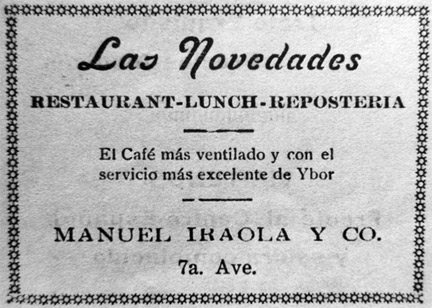 |
Manuel Iraola (Yraola) This ad, probably from the 1910s to 1930s, claims Las Novedades is the most ventilated cafe with the most excellent service in Ybor City. Of interest here is the apparent ownership of Las Novedades--Manuel Iraola and Co. It is not known how long and when Manuel Iraola's company owned Las Novedades, but it must be after 1910 according to Mr. Iraola's 1920 census record shown below. It is possible that Manuel Menendez was the manager of the cafe, but Iraola was the owner. Manuel Iraola (Yraola) appears on the 1920 census of Tampa at 1517½ 7th Avenue, which was on the south side of the next block east of Las Novedades Cafe. Iraola's 1920 census shows he came to the US in 1910, and was age 35 in 1920, making him too young to have started Las Novedades in 1890. |
|
|
|
|
1920
Census, Tampa - Manuel Yraola and brother Ramon were living at 1517½ 7th Avenue. At this time, Manuel was the proprietor
of El Diego restaurant. His brother, Ramon, was a waiter
at the same, and in the same building was living Celestino
Diaz, a waiter at the Grand Orient Restaurant. (See
below about the Grand Orient.) All three men were single
and born in Spain, with Manuel and Ramon arriving in the US
in 1910 and having alien status in 1920. This is the
only census that Manuel Iraola appears on, and coincidentally,
one on which Manuel Menendez could not be found.
|
|
|
|
This 1926 photo shows Las Novedades cafe on the left, with signage advertising "Cafe - Dulceria - Restaurant." "Dulceria" is an establishment that sells sweets. Another cafe can bee seen on the south side of 7th Ave., the "Broadway Cafe Restaurant." 7th Avenue was also known as "Broadway" in the early 1900s. As seen by the vertical "blade" sign, the east end of the Warren Building was occupied by a store named "Katz's", now a brick building.
|
|
|
|
A view of 7th Avenue looking east, in 1927. Notice the establishment on the right, "Going out of business" and "Guerra Bros. Shoe Store" on the left. The sign under it advertises "Trigo & Dorrego Tayloring" and above the awning a waffle shop. |
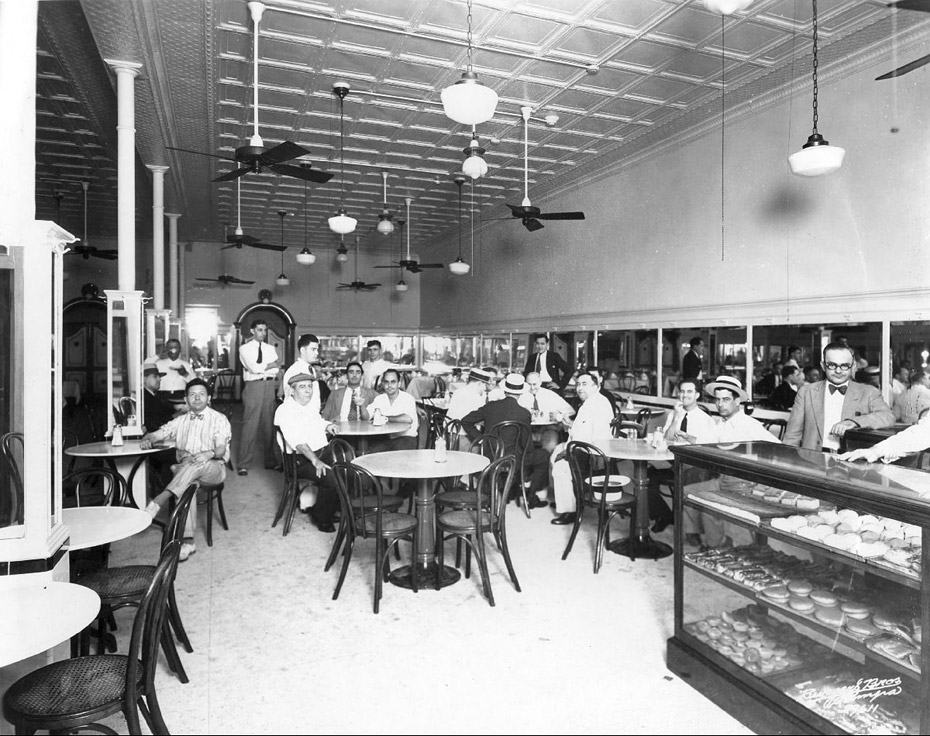 |
|
An
interior view of Las Novedades Cafe in June of 1929. The
display case on the right is likely to be the "dulceria"
(sweets.) |
Prohibition Era Raid, 1933
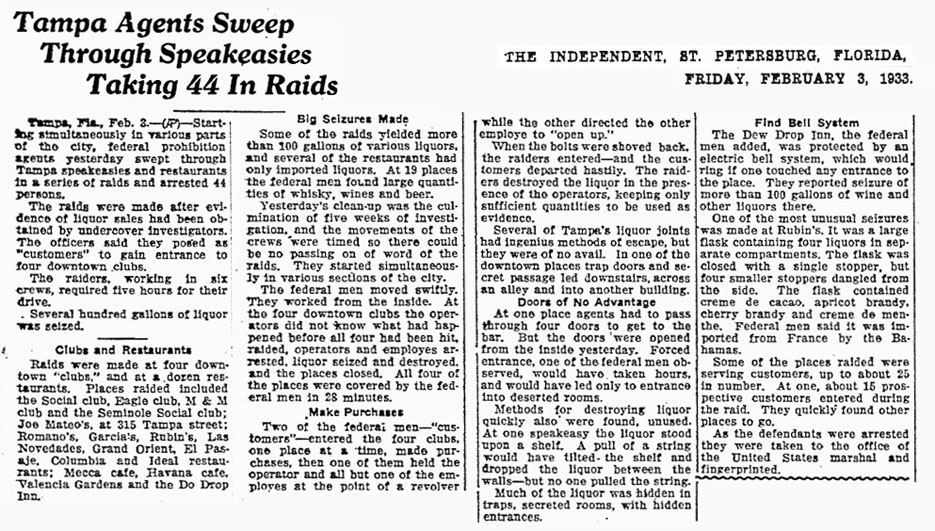 |
|
|
|
|
| Mar 20, 1935 |
Apr. 3, 1936 |
|
Advertisements such as these appeared regularly in local
newspapers during the 1930s and 1940s. |
|
|
|
This 1937 photo shows auto and streetcar traffic on 7th Avenue, Las Novedades cafe with a new "blade" sign, and the second floor balcony has now been enclosed. The Ritz Theater has opened on the southeast corner of 7th Avenue and 15th Street and at the far right can be seen the Ybor City Chamber of Commerce. |
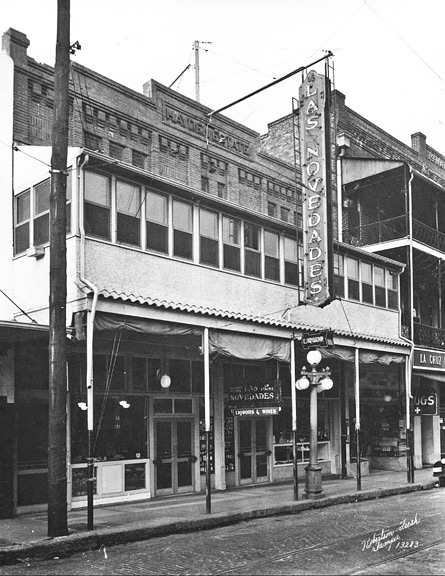 |
This 1939 photo gives a full view of the enclosed 2nd floor balcony. The brickwork at the top of the building shows "Hayden Estate." The sign above the door advertises private salons upstairs. liquors and wines. The Prohibition Act, also known as the Volstead Act, went into effect in late Oct. of 1919 with the 18th amendment to the U.S. Constitution. It was repealed by the 21st amendment on Dec. 5, 1933. |
|
Manuel
Garcia, Before Las Novedades: La Fonda and Columbia Cafe
1921 passport application photo of Manuel
Garcia Manuel's brother, Ramon, who was 25 when he arrived from Spain in 1905, probably immigrated with his brother, Vicente Garcia, who also arrived in 1905. In 1909, their brother Juan arrived from Spain and by 1910 worked as a waiter at the cafe, while Vicente worked as a cigar maker. (See 1910 census below.) Adjacent to Garcia's La Fonda, a Mr. P. A. Vazquez had established a small cafe by 1903, which he named The Columbia Cafe after the patriotic song, Columbia, the Gem of the Ocean. |
|
|
Casimiro Hernandez and the Columbia As a boomtown still on the rise in 1903, Tampa's Latin quarter required plenty of labor. No stranger to hard work, a newly arrived immigrant named Casimiro Hernandez recognized an opportunity for success while working at the Florida Brewing Co. on 5th Avenue. The brewery's general manager from 1905 to 1909, Bautista M. Balbontin, counted on his outlets, usually saloons, to sell his ale. In 1905, Balbontin acquired the Columbia Cafe on the corner of 7th Ave. and 22nd St., and Casimiro went into partnership with him. The 60-seat cafe became the Saloon Columbia.
|
Hernandez offered liquor, wine, cigars and cafe con leche to the local cigar workers; later adding sandwiches and snacks. But for full meals, patrons went next door to La Fonda. By 1912, Hernandez had a thriving business with the saloon and bought out his partner, Balbontin.
The Florida Brewing Company and Ybor City Ice Works at 5th Ave. and 13th St., 1898 |
Manuel Garcia's 1910 Census Record
|
|
|||||
|
Manuel
Garcia is on the 1910 census of Tampa, living in the
home of Vicente Rodriguez at 1613 22nd St. Manuel
was a brother-in-law to Rodriguez, as was Ramon Garcia,
Vicente Garcia and Juan Garcia. Apparently, the
four Garcia men were brothers of Victoria, Vicente
Rodriguez's wife. Manuel was age 24, indicating an
1885-86 birth year. The record shows Manuel came
to the US in 1903, with his brothers coming in 1905 and
1909. Ramon and Manuel's occupations were
"Merchant, Coffee Shop" and Juan was a waiter in a
coffee shop.
Interestingly, this household was enumerated in error on
another page of this census, in Precinct 29 - Ft.
Brooke, and then lined-out. The image below shows
this same household and shows Ramon and Manuel as
"Proprietor, Coffee House."
|
|||||
 Prohibition Threatens the Columbia Saloon In 1918, Prohibition hit Florida and Casimiro Hernandez had a bitter dilemma--lose the Columbia saloon or find a new use for it. He didn't have to go far to find new partners. The Garcia brothers, who owned La Fonda next door, agreed to join Hernandez in 1919 and retain the name, Columbia. The two businesses had depended on one another anyway, even opening a joint bakery in 1916. With the Columbia, the size of the La Fonda doubled overnight, and Hernandez became a more legitimate restaurateur. La Fonda became the name of the Columbia's new dining room. The 1915 map at the right shows the 2100 block of 7th Avenue with the location of La Fonda and the Saloon Columbia outlined in red. The Columbia Restaurant now occupies this entire block.
La Fonda dining room of the Columbia Cafe. A young Casimiro Hernandez, Jr. can be seen on the right.
Casimiro Hernandez, Jr. behind the bar at the Columbia Cafe bar, 1929 .
Garcia Sells to Hernandez
In the early 1930s,
the restless, perfectionist Casimiro Hernandez, Jr. wanted to consolidate and
expand. Many people had doubts about such a risky venture during the Great
Depression. Manuel Garcia, who by this time owned the Garcia family's
share in the Columbia, was opposed to expansion. Casimiro Jr's brother, Lawrence,
bought a share of the Columbia, thus weakening Garcia's hold on the
business. Determined to fulfill his dream of a lavish new dining room,
Casimiro Jr. bought Garcia's share of the company. To some, Casimiro
Jr. seemed like Don Quixote, charging at windmills in a fantasy world.
Hernandez appropriately named the new dining room, which opened in 1935,
The Don
Quixote Room. The repeal of Prohibition in 1933, along with
air-conditioning, a bandstand and dance floor, made the Don Quixote room a
success, and along with an expanded and modernized kitchen, turned the
Columbia's struggle into success. |
|
|
|
| The Columbia Cafe on the corner of 7th Avenue and 22nd Street, in the midst of the Prohibition era, 1929. The original location of the saloon was on the corner, with La Fonda at the next storefront to the right. | The 22nd Street side of Columbia Restaurant in 1935, looking towards 7th Avenue at the far right. See the Columbia Restaurant here at Tampapix |
|
Manuel
Garcia Buys Las Novedades In 1939, Manuel Garcia bought the struggling Las Novedades restaurant. Though the restaurant had been around since 1890, it had fallen on hard times during the Depression and closed for a time. The Garcia family continued to operate the cafe & restaurant in the middle of the 1400 block of 7th Avenue until they moved into their new, spacious location at the corner of 7th Ave. & 15th Street during National Restaurant Week of 1946. |
|
|
|
|||||||||||||||
|
|
|||||||||||||||
|
International Bank employees having yellow rice &
chicken dinner at Los Novedades, ca. 1942 Details from above photo
|
|||||||||||||||
|
This
message, along with the recipe, appeared in an
advertisement promoting the 50 year anniversary of Las
Novedades in 1940: "Las Novedades, established in 1890, is Tampa's oldest Spanish Restaurant. It has occupied the same location in the heart of Ybor City for fifty years. Today it is a landmark in this picturesque Latin colony. The fame of Las Novedades has spread to the far corners of the earth. Last year Las Novedades was host to thousands of discriminating visitors from almost every State in the Union as well as from Canada, Europe and South America.
Soak Garbanzos overnight with a tablespoon salt, sufficient water to cover beans. When ready to cook, drain the salted water from beans and put Garbanzos, beef bone and ham bone in two quarts of water. Cook for 45 minutes on slow fire. Fry bacon and onions in lard, onions having been chopped fine; place these in pot, adding potatoes, saffron and salt. When potatoes are done, remove from fire, add Chorizo cut into thin slices. |
|||||||||||||||
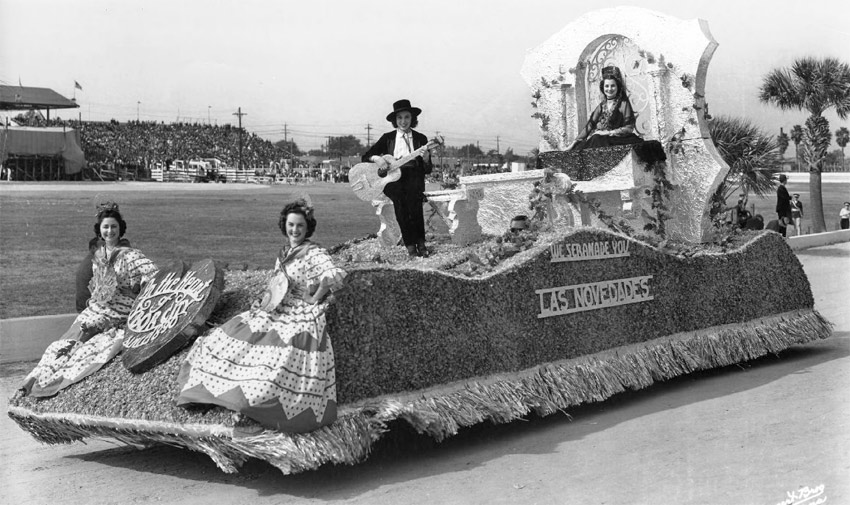
Las Novedades "We
Serenade You" float at Plant Field, Gasparilla Parade circa
1940s
|
|
Las Novedades Moves to the Corner, 1946 By the 1940s, the restaurant enjoyed a reputation as one of the city's finer Spanish restaurants. In 1946, the the corner of 7th Ave. & 15th St. was rebuilt or remodeled resulting in the iconic Las Novedades building we know today. Owners Manuel Garcia Sr., Manuel Garcia Jr., and Lorenzo del Palacio (a relative of Manuel Garcia Jr's mother-in-law's family) spared no expense in their effort to make their new quarters for their historic restaurant, one of the finest in the country. Its architecture, interior furnishings and decorations, and modern scientific kitchen equipment left little to be desired. The Burgert Brothers photography studio used their 1946 photo and retouched it to eliminate wires poles and other distractions, to form the basis for the ideal view used in the 1946 postcard. |
| Las Novedades was built like a Moorish courtyard, with orange trees in the corners and a banderilla of naranjas (oranges), slung over the grillwork windows. It had that slightly seedy air of a true gourmet corner—you could order crawfish nine different ways—but there was also a table d'hôte dinner at $3.50 which included Spanish beans, Spanish mixed salad, sea bass, Spanish yellow rice with chicken, egg custard and coffee. There was a coffee and pastry shop adjoining where you could pick a kind of deflated napoleon, called a "Señorita", or a guava turnover out of the banks of cakes. | |
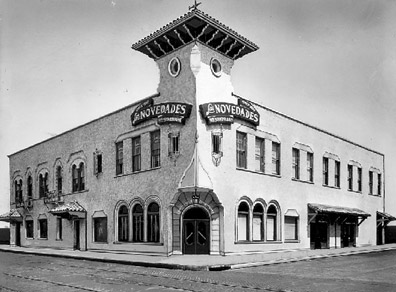
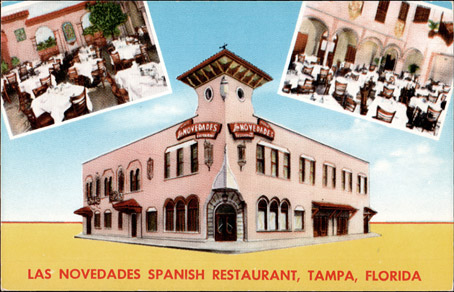 |
|
| This print is a retouched version of PA74. Neg. no. 59857 ; taken 1946. | |
|
The Grand Orient Restaurant
The Grand Orient Restaurant was owned by a different Manuel Garcia of La Fonda, Columbia Cafe and later Las Novedades. It soon moved to the southwest corner of 7th Ave. and 16th St.
|
Grand Orient Restaurant ad from 1906 Tampa city directory. It is possible that 7th Avenue underwent a renumbering of addresses between 1906 and 1915 and the 1433 7th Avenue address in the ad is the same location seen above on the corner of 7th and 16th. |
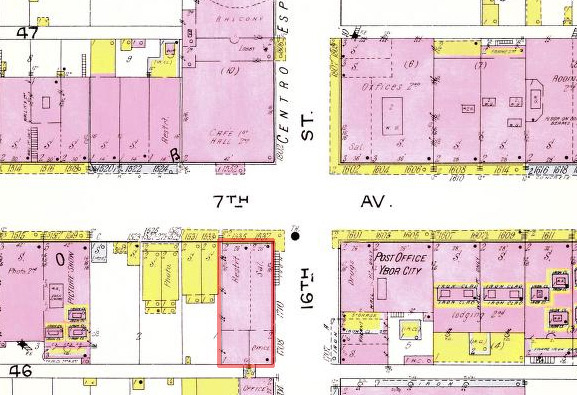
This 1915 map shows the intersection of 7th Avenue and 16th Street.
The location of The Grand Orient Restaurant is marked with a red
rectangle. Across 7th Avenue was the Centro Español cafe on the
first floor and hall on the 2nd floor. Across 16th St. was a
drugstore and Ybor City Post Office. On the same block, a few
lots to the left of the Grand Orient, can be seen the
Burgert
Brothers
|
|
|
|
|
|
A group of waiters at the Grand Orient Restaurant, 1905. |
Local entrepreneurs relax in the Grand Orient Restaurant, 1908. |
|
Menu for the Florida Postmasters Association dinner given at Grand Orient Restaurant, Garcia's Place, Feb. 21, 1908 |
|
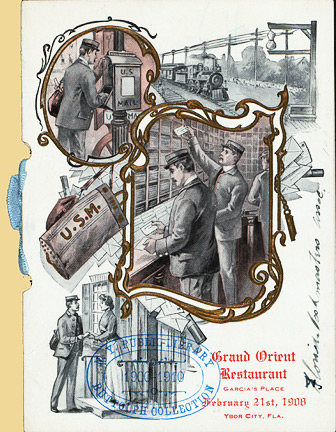
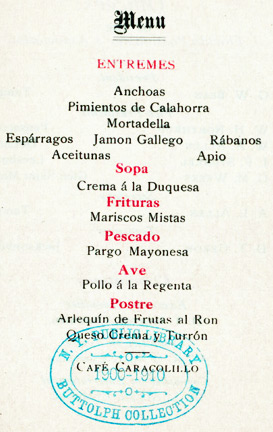
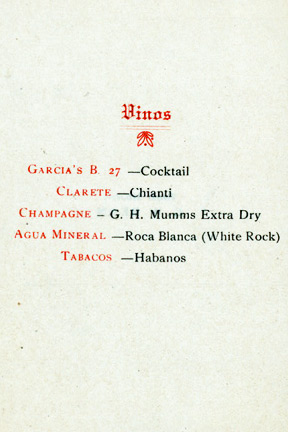 |
|
|
Menus for other banquets at the Grand Orient
Restaurant |
|
|
|
|
|
|
Tampa Wholesale Grocers Assoc.
banquet to Southeast Freight Assoc. |
Dinner party
given by Miss Charlie Smith at Garcia's place, |
Banquet for the Florida Brewing
Co. |
|
After clicking the link to see larger, choose the "resize" option then the green right arrow to scroll through the menu pages. |
||
|
|
|
|
Florida State
Fair welcome to Mr. John Skelton Williams |
Hillsborough
County Medical Association Banquet |
|
After clicking the link to see larger, choose the "resize" option then the green right arrow to scroll through the menu pages. |
|
Las Novedades, 1946 to 1971
|
|
|
|
1947 Las Novedades exterior view from corner of 7th Ave. and 15th St. Notice the new signage (better view below.) |
|
|
|
A 1947 view of Las Novedades from across the street looking towards 15th St. Notice the new blade sign and marquee, and the Ritz Theater at the far right. |
|
|
|
|
Las Novedades dining room prepared for service, 1947
|
Las
Novedades dining room packed with customers. |
|
|
|
|
Tampa Optimists Club banquet, circa 1946 |
Ybor City Optimists Club banquet, 1946 |
|
Las Novedades
in St. Petersburg
|
|
|
|
|
|
|
| A July 11, 1947 newspaper article about a robbery there names Sandalio Ayala as co-owner of the restaurant. |
|
|
|
This July, 1951 ad indicates that there was a West Tampa branch of Manuel Garcia's Las Novedades restaurant. |
||
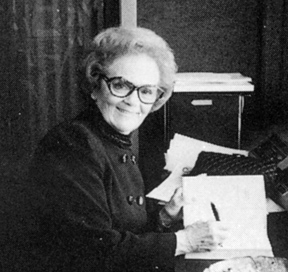 |
Clarita del Palacio Valdes de Garcia (wife of Manuel Garcia, Jr.) C larita Garcia came from a family in which the preparation of fine Spanish food was both a way of life and livelihood. She learned to cook as a very young girl, simply because she enjoyed it. Her mother, Doña Clara del Palacio Valdes, was a talented, creative cook with the patience to teach her. Her grandfather was an innkeeper in Spain, and her father's brother, Don Pancho Valdes was a cook in the royal palace of Spain's King Alfonso XIII, before the fall of the Spanish monarchy. When her uncle came to America, he taught Clarita's mother how to prepare many of the gourmet dishes he served in the royal palace.Clarita's father, Antonio Valdes, and his father, were restaurant operators and chefs in their own businesses. For this reason, they were critical of the preparation of foods, as most connoisseurs are. This motivated her mother to prepare meals little short of perfection. |
||||||
|
1920 Census of Antonio Valdes
The 1920 Census of West Tampa shows Clarita's father, Antonio Valdes at age 45, immigrated to the US in 1900, occupation cook, restaurant. His wife was Clara (del Palacio) who worked as a bander in a cigar factory. Their children were "Pepe" (Jose/Joseph) age 10, Antonio (Jr.) age 8 and Clara ("Clarita") age 5, all born in Florida. Also in their home was Antonio's niece, Jesusa, two boarders and a housekeeper named Rosa Tamargo. The Valdes family appears on the 1930 census with Clara as head of house, widowed, so Antonio died after Jan 1, 1920 but before April 1, 1930. |
|||||||
|
Spanish Park Restaurant
Both of Clarita's brothers, Jose and Antonio Jr., inherited their father's skill and love of the culinary arts. They owned and operated Spanish Park Restaurant which was one of Tampa's finest. Located at 3517 E. 7th Ave. since 1932, it was a 4-generation family-owned business. The restaurant was built on the location of the estate of Gavino Gutierrez, a Spanish civil engineer who surveyed the land for Ybor City in 1884 as a site for a possible guava processing plant. Gutierrez called his estate, Spanish Park. Clarita's brother Joseph Valdes owned the restaurant, and later was managed by Clarita's nephew Griffin Valdes and his wife. In 1993, the renowned Spanish Park Restaurant was bulldozed.
Spanish Park Restaurant dining room in 1943 and bar in 1952
Ads from Jan. 1945
Spanish Park Restaurant ad from a 1950 Cigar Bowl football game program. The fine print:
In the mid 1930s, Clarita attended the University of Madrid where she studied languages. With her degree, she went on to work at the U.S. Embassy as an interpreter. When Clarita married Manuel Garcia, Jr. in 1939, she married into another remarkable culinary family. Her mother-in-law, Doña Concepcion Garcia, was a perfectionist in her kitchen. The first dish she taught Clarita to prepare was Sopa de Tenedor (Fork Soup, one of her husband's favorites.
|
|||||||
|
Mrs. Garcia also wrote Tampa's first Hispanic cookbook, Clarita's Cocina, (published in 1960 and again in 1995) which explained the reasons for the meticulous traditions of her perfectionist Spanish cooking. Many kitchens producing Spanish cuisine in Tampa use her recipes as a reference for methods which have been handed down for generations. When there is a disagreement on kitchen procedure, the comment, “Check Clarita’s recipe. What does she say?” is often heard.
Clarita hosted cooking shows on WTVT for 23 years, appearing regularly on Pulse Plus with tantalizing recipes and cooking demonstrations. According to Mike Clark's Big13.net, when Clarita was partnered with Bruce Hutchcraft, pandemonium resulted, as told by former sports reporter Pete Johnson: "Comedian Marty Allen was on Pulse Plus!. During Clarita and Bruce's segment, Marty took over the show and things got wild. Our director, Joe Wiezycki, called me back to the set to help get control of the situation because all Bruce was doing was laughing the entire time and Clarita was totally flustered. It was hilarious!" She followed up her first cookbook with Clarita's Cooking Lighter in 1997. Clarita Garcia, at age 85, leans to this more beneficial way of life, while maintaining the consistently flavorful cuisine her loyal fans so appreciate. Ybor City's First Lady (of cuisine), helped make Tampa the center of Spanish cuisine. Her tapas, tortillas, boliche and tomatoes rellenos are mainstay recipes in Spanish and American homes throughout the United States.Between the restaurant, the
cookbooks and TV cooking lessons, she became something of an unofficial
grandmother to the Tampa Bay area's Cuban and Spanish community for more than half a
century. Known as a perfectionist in the kitchen, Mrs. Garcia poured out her heart through her recipes, but also through soulful writing about her love of cooking. Consider this passage from Clarita's Cocina: "My mother was of the belief that a bowl of soup prepared with rich broth, to say nothing of a bowl of Potaje (pottage), gave life to a listless bloodstream. Consequently, the familiar fragrance of the stock pot cooking on the stove was embedded in the walls of the large, warm, cozy kitchen where, as children, we spent so many happy hours." Like the recipes that fill her cookbooks, Clarita Garcia is remembered for a life as rich and savory as her favorite dishes. On April 20, 2006, the 91-year-old culinary legend died of heart failure. "She didn't have a mean bone in her body. She was one of those people that laughed at herself a lot," said close friend Helen Benito.
|
|||||||
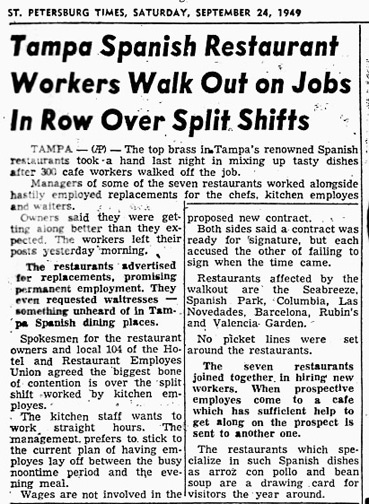
|
|
|
|
Las Novedades dining room in 1953
|
|
|
|
|
|
Las Novedades bar and coffee shop, 1954
|
|
|
|
|
|
| By 1970, Las Novedades had become a richly adorned restaurant with furniture, marble and decorations from Spain, including tiles with gold leaf and Goya prints. It also earned an international reputation to go with its posh surroundings: Eighteen annual Holiday Magazine awards and the Florida Trend Silver and Golden Spoon Awards for eight consecutive years.
|
|
|
|
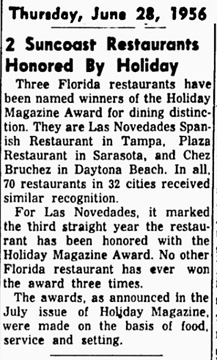
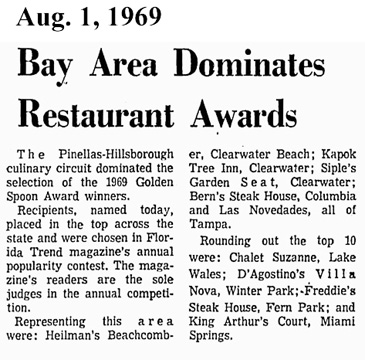 |
|
|
|
|
|
|
Billboards located at the corner of Tampa & Emily Streets Upper left: 1956, Vaughn Wilton Monroe (October 7, 1911 – May 21, 1973) was an American baritone singer, trumpeter and big band leader and actor, most popular in the 1940s and 1950s. He has two stars on the Hollywood Walk of Fame for recording and radio. Upper right: 1956, Emmett Leo Kelly (December 9, 1898 – March 28, 1979) was an American circus performer who created the memorable clown figure "Weary Willie", based on the hobos of the Depression era. Left: 1957, Joseph Patrick Carrol Naish (January 21, 1896 – January 24, 1973) was an American character actor. In a show business career that spanned more than five decades, the swarthy, black-haired, mustachioed Naish played Hindus, Mexicans, Japanese, Chinese, Arabs, Jews, Italians, Poles, English, American Indians and South Americans. He was twice nominated for an Academy Award for film roles, and he later found fame in the title role of CBS Radio's Life With Luigi (1948–1953), which was also on CBS Television (1952-1953). |
|
|
|
|
Las Novedades dining room, 1957 |
Patrons served by Helen Diaz, Miss Cigar Queen 1960, during the TriCity Suncoast Fiesta in Ybor City, 1960 |
|
|
In Sept. of 1966, Tampa's plan for urban renewal of Ybor City began with the demolition of the first of 708 buildings and process of relocating 787 families, 100 families of which had already been moved. The commercial rehabilitation of Tampa's "Latin Quarter" had begun over a year earlier on a voluntary basis. The area where buildings were to be torn down covered 65 acres, while the whole project covered 165 acres in the Latin Quarter area. The renewal area included top-name Spanish restaurants--The Columbia and Las Novedades. It included Cuban clubs such as The Casino and others, two of Ybor's clinics, and the business district. |
|
Patrons in the Goya dining room, 1957 |
Also see "Ybor Progress Stirs Memories" |
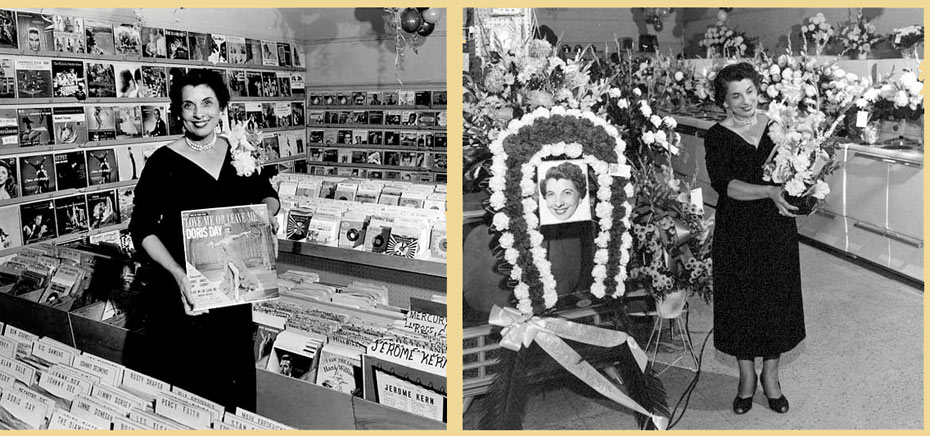 |
| "La Alcaldesa" Molly Ferrara at Columbia Music and Appliance Company, 1416 East Broadway, 1957. Molly was a widow who owned and operated the Columbia Music and Appliance store next to Las Novedades on Broadway Ave (7th Ave.) in Ybor City. In October of 1954, Molly was inaugurated as the honorary mayor, "Alcalde" of Ybor City, thus being the first female "boss" of the city. Read her comments about Ybor City here in this November 28th, 1957 newspaper article "Ybor City A Crime Town? That's Just Balderdash" |
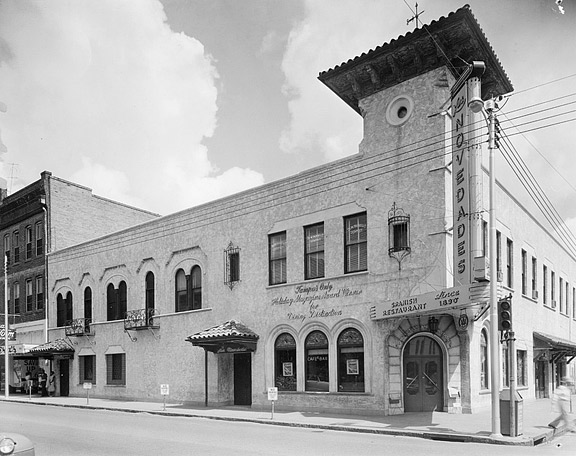
|
Las
Novedades Sold The Garcia family sold Las Novedades in 1970, Tampa's oldest restaurant at the time, to its friendly competitor, Cesar Gonzmart of the Columbia Restaurant fame, and James W. Walter, chairman of the board of Jim Walter Corporation. Gonzmart and Walter each took 50 percent of the approximate $500,000 sale price. Las Novedades was to be managed by Casey Gonzmart, Cesar's son, who had just completed 5 years of schooling and training in hotel and restaurant management in Europe. Cesar Gonzmart, who at the time owned all of the stock in the Columbia, said operations of the Columbia would not be affected by the changes, and would in a sense be competing with his own son down the street. |
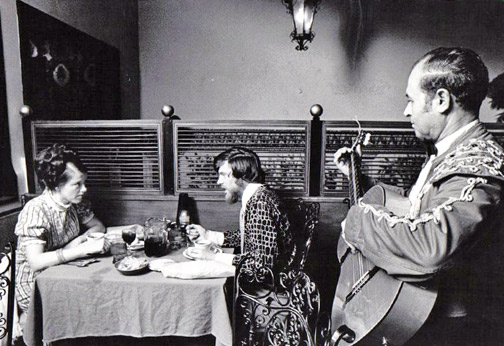 |
|
|
Customers enjoy a guitar serenade, 1972 |
 |
|
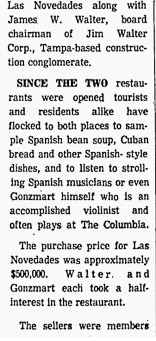 |
May 5, 1970, St. Petersburg Times |
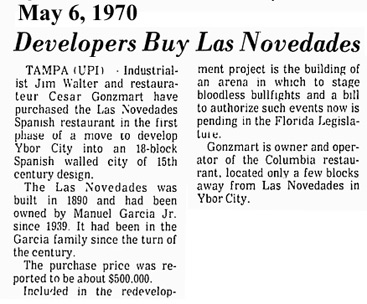 |
Las
Novedades Closes Permanently On Nov. 11, 1972, Gonzmart closed Las Novedades, having sold it to Longchamps of New York, who converted it to a Steak and Brew. Gonzmart planned to "absorb" key employees at his Columbia." The article at left is incorrect about the restaurant being in the Garcia family since the turn of the century. |
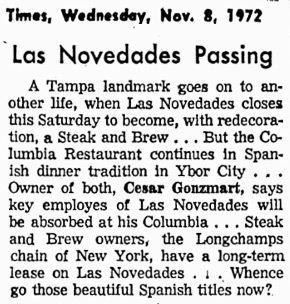 |
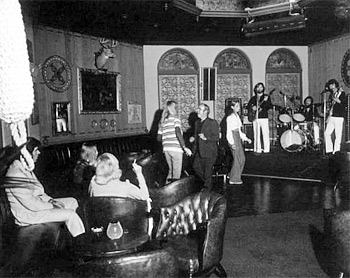 |
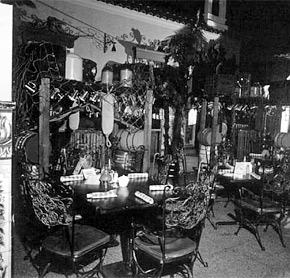 |
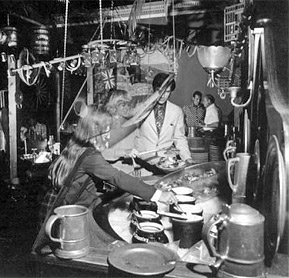 |
|
Steak and Brew dance floor/bandstand, dining area and salad bar, 1973
|
||
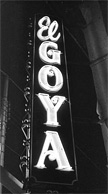 In 1975, William G. Miller
purchased the historic Las Novedades building and
converted it to the El Goya lounge. Its mysterious
underground drive thru valet area that went thru the building a tunnel
on the west side of the building, was later made into the "Island Bar"
during the Frank Cabot "El Goya Mall" days of 1984-1986. In 1975, William G. Miller
purchased the historic Las Novedades building and
converted it to the El Goya lounge. Its mysterious
underground drive thru valet area that went thru the building a tunnel
on the west side of the building, was later made into the "Island Bar"
during the Frank Cabot "El Goya Mall" days of 1984-1986.
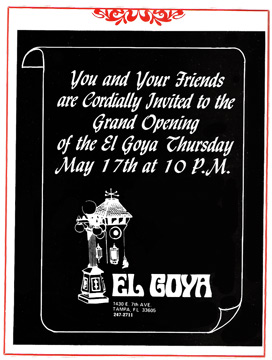 1979 El Goya advertisement
1979 El Goya advertisement
After the restaurant had its run as El Goya, Vince Wilson and his parents, after running the club and renting the building, purchased the building in December of 1981 from Frank Caven, an investor. Wilson could not make a profit and pay the mortgage as well as taxes and insurance. He and his co-investors, including Robert Fournier, lost the building back to Caven on March 14, 1984 by foreclosure sale on the Hillsborough County Courthouse steps. Caven and his Cadre Inc, company embarked on redoing the El Goya to a mall concept and name each bar after one of his clubs he had in the Houston area. They hired Larry Montgomery as general manager and kept the bar open using the alley entrance, utilizing just the western bar during this 4 month process. Then on Thursday July 12th, 1984, the grand opening took place. There were limos and a crowd of over 8,500 came out by special invitation only. The grand opening of the "El GOYA MALL" was billed as Florida's Largest Entertainment Mall. Then in 1985 and 1986 Caven sold most of his Tampa Bay area holdings, including the Goya, to John Arnaoutakis, known to many as John Takis. |
|
In March of 1989, El Goya was sold for $1,700,000 to Broadway Development, Inc., who are the Capitano Family of the Radiant Oil Co and the Radiant Food stores. Since then the club has been leased and operated as Tracks, Pleasuredome and Czar.
The photo at right is by Bryan Weinstein of Tampa Changing. Bryan has created a unique website with his photos by using "re-photography"--photographing present-day locations at precisely the same view as it was photographed long ago. He then presents them by providing the means to view them by "morphing" one to the other. See it happen with the photo at the right at his website, and read about his inspiration for creating this historic project. Don't miss his gallery which contains numerous photos of historic locations in Tampa and the bay area. Take a trip back in time at TAMPA CHANGING! |
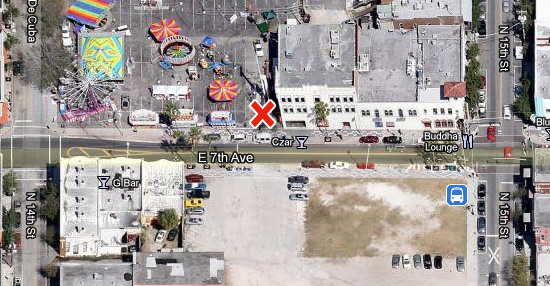 |
The recent image at left shows 7th Ave. between 14th and 15th Streets as mostly parking lots on the north and south sides. The original site of Las Novedades is marked with the red X. The carnival was temporary. |
|
The street view at right shows the empty lot where the original Las Novedades cafe once stood. Just past the lot is the 3 story building which was originally the "Warren Building" and in 1946 became the new Las Novedades restaurant. |
|
|
Manuel "Manny" Garcia, III Manuel Garcia, Jr. and his son Manny left the fine cuisine scene to enter the fast food scene, having purchased two Burger King restaurants in Orlando in 1969 and franchise rights in seven counties in central Florida. Manuel Garcia, Jr. was delighted with the sale of Las Novedades and planned to spend more time with his family, expecting that the fast food business was less demanding. Manuel "Manny" Garcia III, a graduate of the Cornell Hotel School who was persuaded by his father to get involved with Burger King, is one of the seminal forces in the Florida restaurant scene. Manny, who had just married his high school sweetheart, Gerry Ferlita, and with partners Charlie and Sam Davis of the Tamp Ship and Dry Dock Company, formed Davgar Restaurants and bought a pair of Orlando Burger Kings that were losing money and market. With what would soon be recognized in the company and then the industry as Manny's nonstop energy, hands-on management, drive an determination to be the best, to be No. 1, the two shops, which were losing $40,000 a year, were converted to winners. He grew his franchisee business to a total of 67 restaurants with annual revenues of over $100 million before selling the restaurants to Burger King Corporation between 1996 and 2000.The Garcias bought other franchises and then bought out the Davis brothers.
By the early 1990s, the empire was on of the top three Burger King franchises in
the country, with 65 operations. |
|
||||
|
With the profits, an annual gross of $80 million, Manny invested in another newcomer, Miami Subs out of Ft. Lauderdale, becoming a master franchiser with 13 owned units and another 28 from Orlando to North Carolina that he supervised as overseer. In addition to 106 separate operations and 3,500 employees, with a gross sales of more than $100 million, the restaurant entrepreneur who had started in his pre-teens washing dishes at Las Novedades saw potential with the California-based El Pollo Loco chicken in 1986. In four years, he had five of them, but being unprofitable, he sold them.
Other Pebbles were opened in Winter Park, Lake Buena Vista and Orlando and as far afield as Plantation, with ambitious plans to open in Tampa. Something similar to the Pebbles concept was tried on Orlando's International Drive in 1991, the Florida Bay Grill, but after three years of valiant struggle, it failed to meet expectations. Manny looked elsewhere for expansion space and inspiration. He did not have to look far, and he had the funds for financing. In 1996 Burger King bought back 57 Davgar franchises, three in southern Georgia, the rest in Orlando, Tampa and Tallahassee, for $55.6 million.
Manny's father, Manuel Garcia, Jr., owner of the Central Florida chain of Burger King restaurants and former proprietor of the internationally known Las Novedades classic Spanish restaurant in Tampa's Ybor City, died on April 20, 1988 at age 72. Garcia, of 621 Dommerich Drive in Maitland, died at Winter Park Memorial Hospital after a long illness.
It was easy to notice Harvey’s Bistro in a street-level corner of the Bank of America building. The upscale bar and restaurant, in business since 1993, was the younger brother of the outstanding Manuel’s on 28th, but in 2009 both restaurants closed and Orlando lost two culinary landmarks. Now, the extraordinary view afforded by Manuel’s space can only be appreciated by office workers, while on the ground floor, Terrace 390 has taken up residence. See recipes from Harvey's Bistro and Manuel's Service is at the heart of any Manny Garcia operation, and with the kind of training received by the staff from the headquarters teams, including Manny and Gerry's daughter Gina, the staffers genuinely reflect respect for what they're doing, for the product, confident that the folks in charge, starting with Manny, push for perfection. Manuel's earned Golden Spoon awards ever since it opened. In 1998 Manny, with partners Hal Valdes and Tony Pace, established Culinary Concepts/Chef Creations to make soups and sauces for Harvey's and Manuel's, but the potential was soon seen for other customers. Now Sysco, the nation's largest distributor to restaurants, markets their products to upscale volume operations such as the Brio Tuscan Grills. Manny sold the Pebbles collection in 1998 but in mid-2002 reacquired the upscale Pebbles restaurant chain he launched in 1986. Garcia bought back the chain from Orlando-based Restaurant Partners Inc. The company quickly struck what looks to be a mother lode in such outsourcing by upper midmarket restaurants, soaring in four years from annual sales of $600,000 to $8 million and expanding its production space from 3,000 square feet to more than 30,000. Manny and his masterful team soon found another lode, this one to take over management not only in terms of food control and creation, but in concept, decor and regular restaurant operations. Recruiting and training chefs and management personnel, creating and standardizing recipes and executing favorable vendor contracts with their $25 million in buying power. The company is Garcia Stuart Hospitality, with Manny as chairman and Larry Stuart, president and CEO, a graduate of the Cornell Hotel School with a distinguished career in New York, Cincinnati, Walt Disney World's Dolphin Resort and Loews Hotels at Universal Orlando.
It's always a greater challenge to repair and rebuild than it is to
start fresh with something new. But the quiet and unassuming Manny
thrives on meeting challenges-and on skiing and running marathons and
winning all kinds of awards and serving his community, generously giving
his time, talent and treasure.
Although Manny Garcia graduated from Cornell University's school of hotel and restaurant management, his mom, Clarita Garcia, said it was the things her son learned by watching his father run Las Novedades in Tampa that made his Burger Kings in Orlando successful in the late 1980s. ''The best food, a clean building, and courteous service,'' she said, ''the principles are the same and Manny has incorporated those into the Burger Kings. ''Anything he did, he did it his father's way of doing things,'' she said. ''All his life, he tried to please his father. Even when he was a child, he was asking me, 'You think Daddy will like this, Mama?' '' Columbia Restaurant at Tampapix Tampapix Home
|
|||||
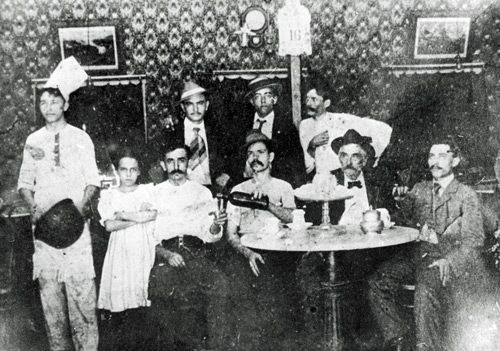
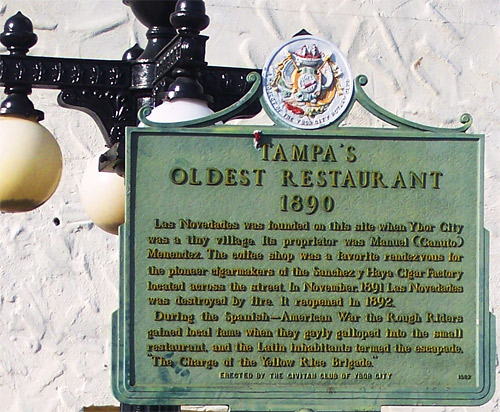
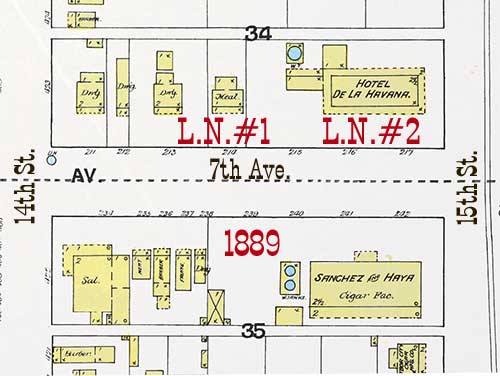
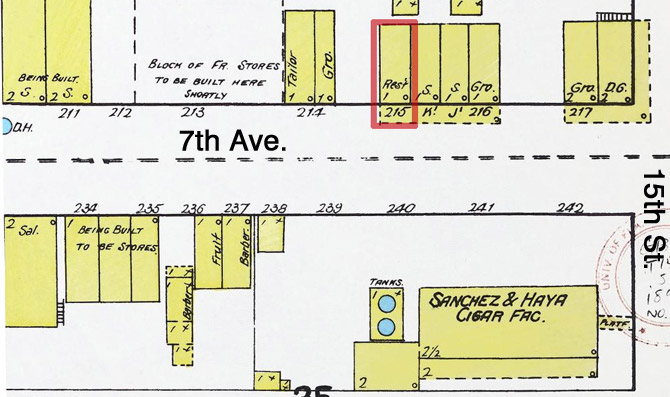
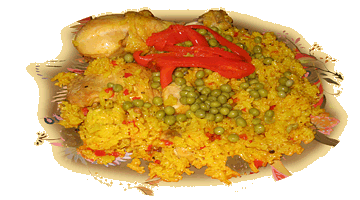
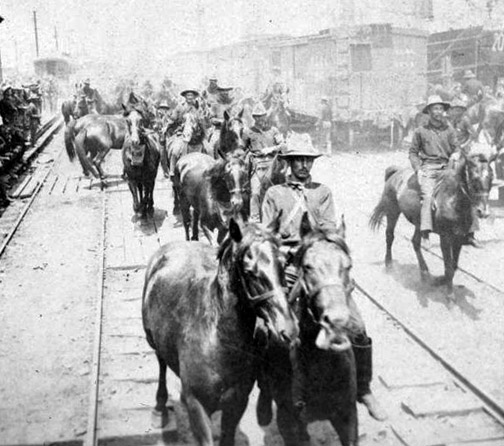
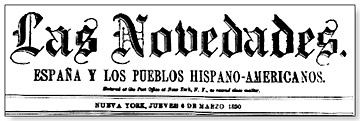
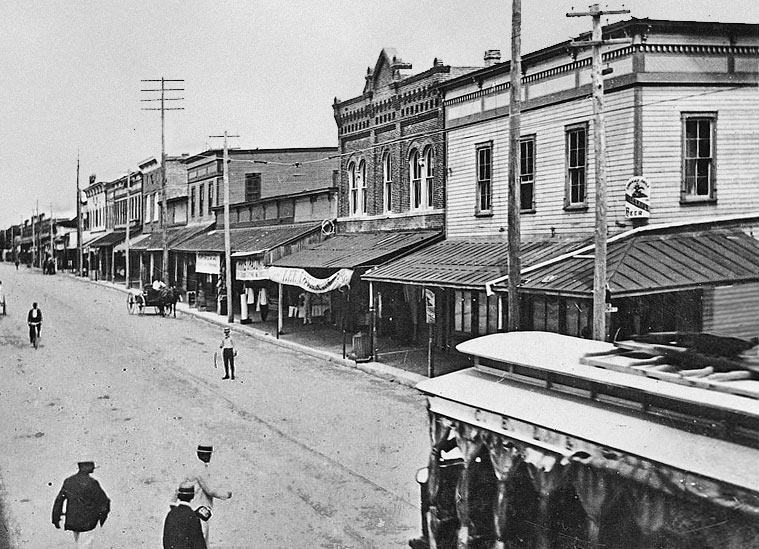

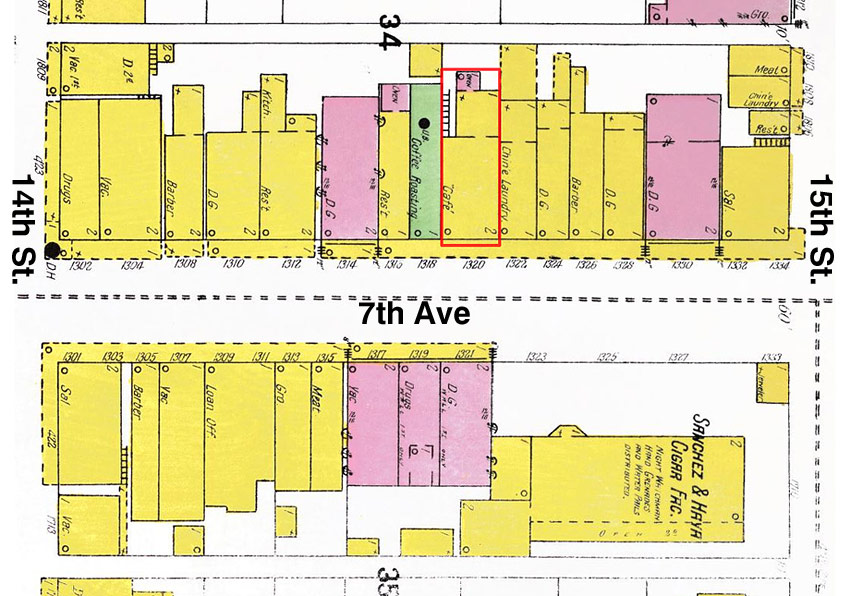
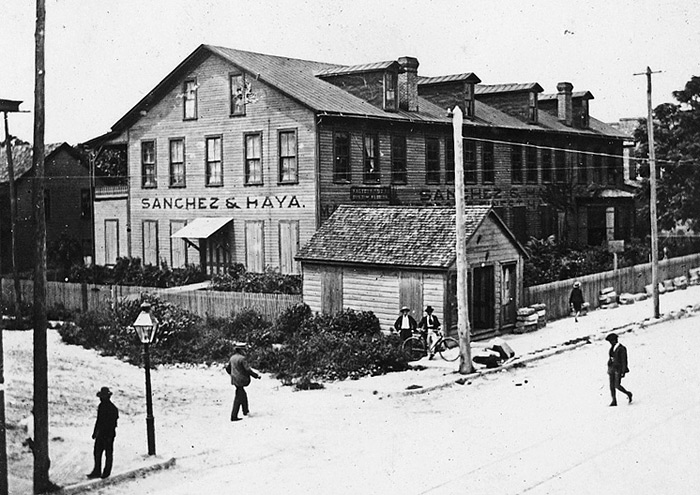

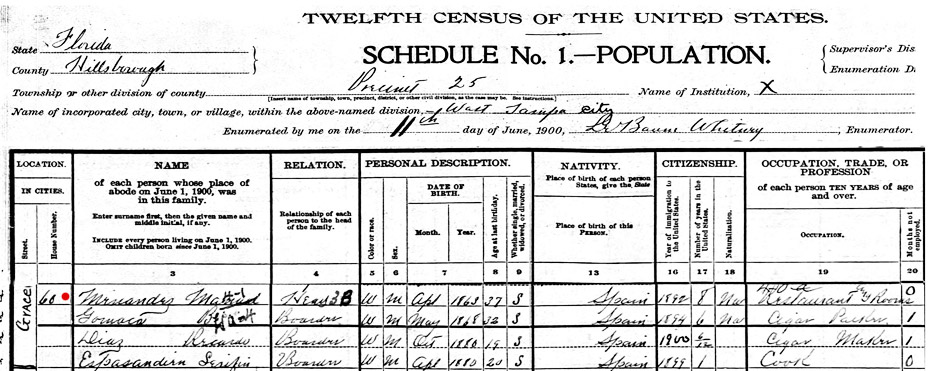
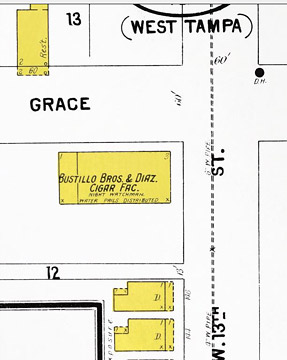
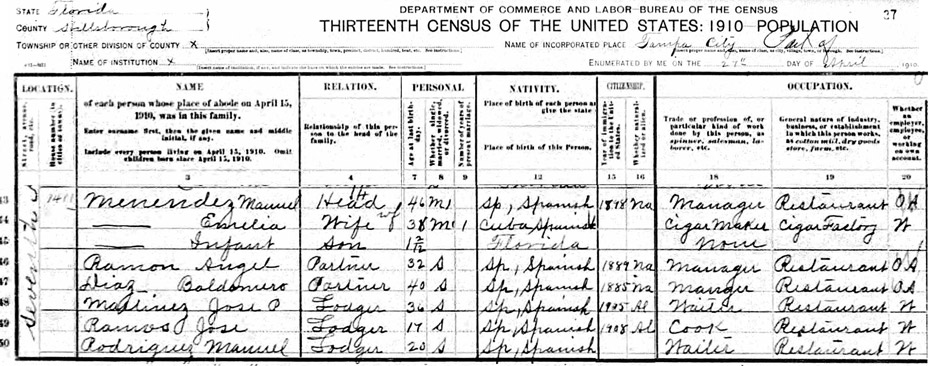
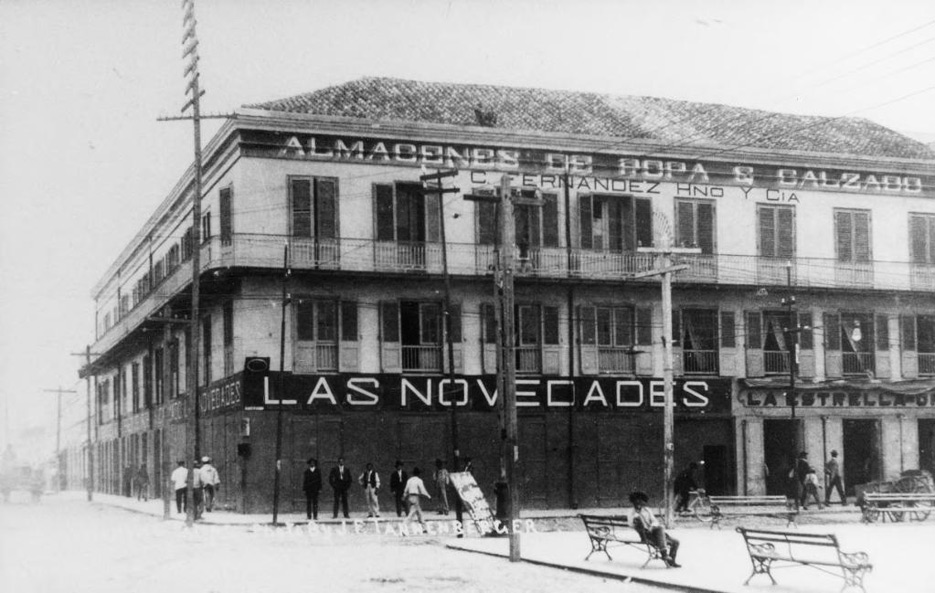
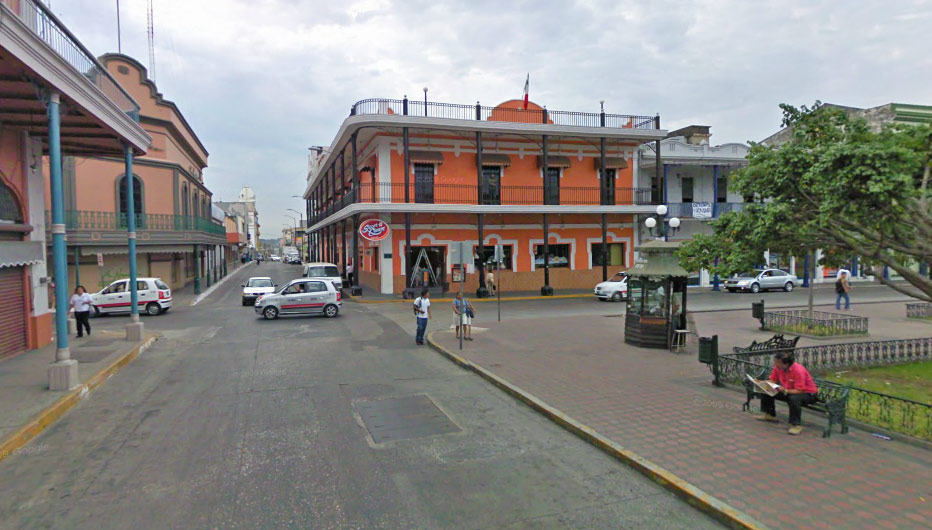
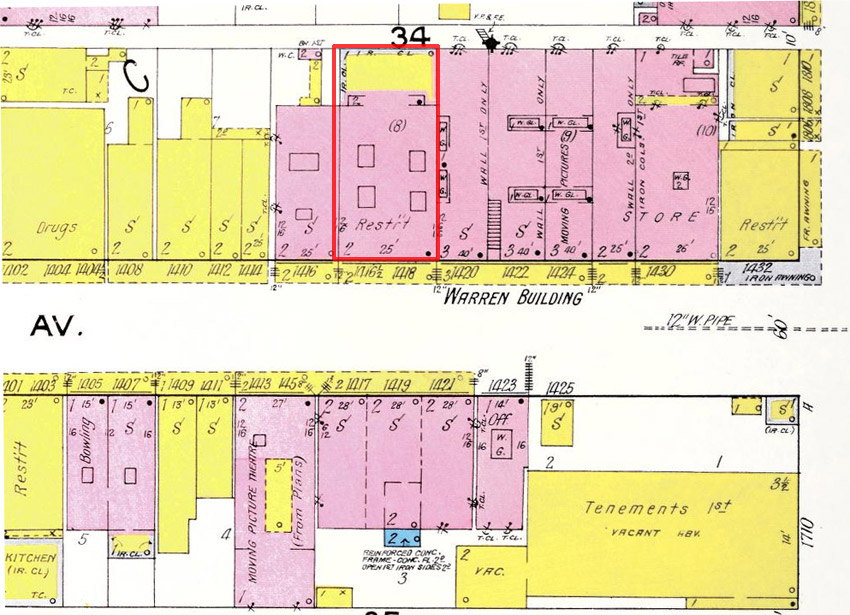

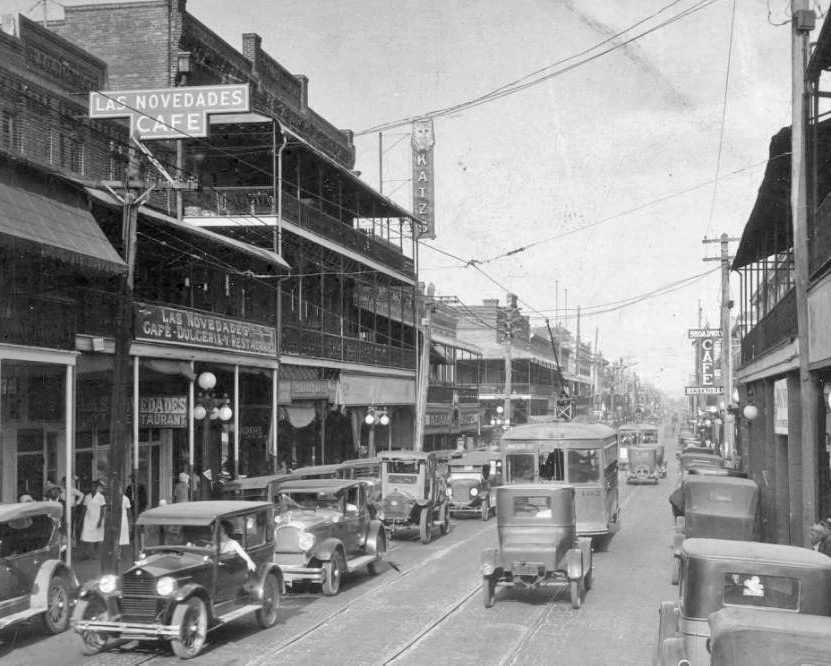
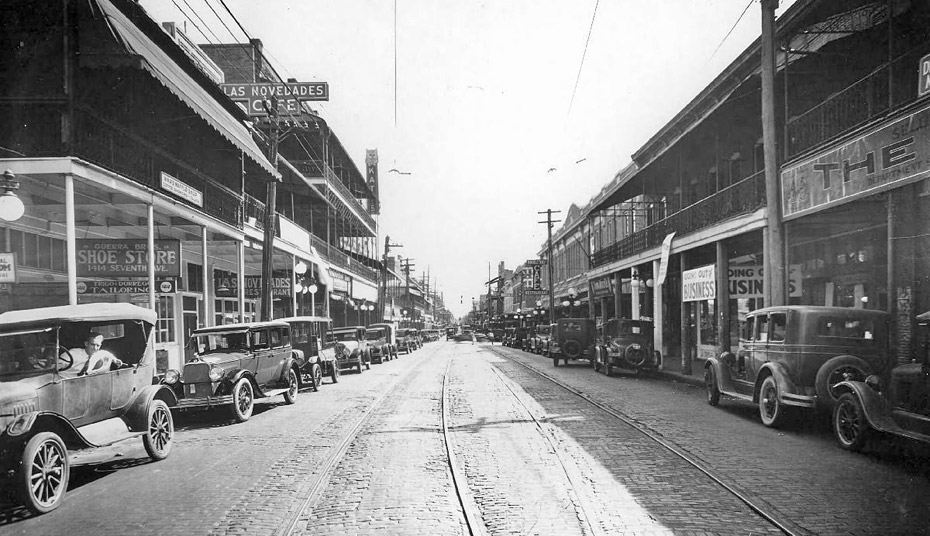
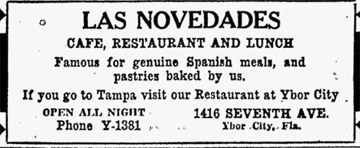
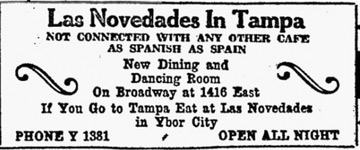
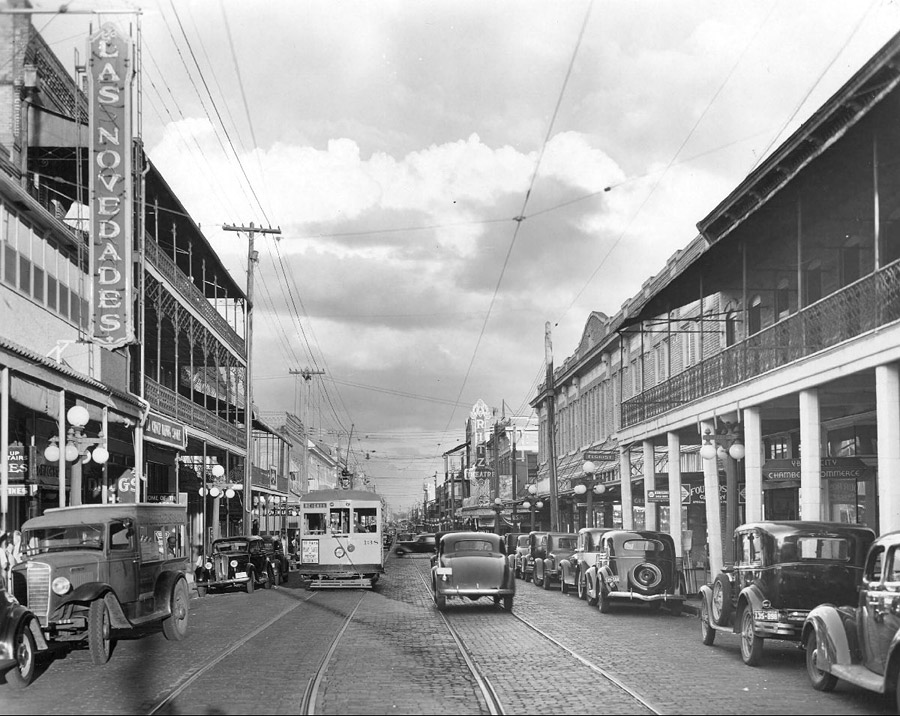
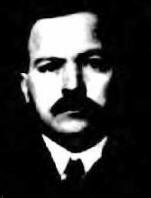
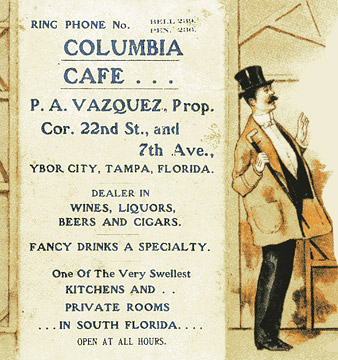 Manuel
Garcia (Sr.) came to Tampa from Spain in 1903 at age 17
and saved enough money in five years by working in the cigar factories, to open a
small cafe along
with his brother, Ramon.
The Garcias took an old storefront and converted it into the La Fonda
sandwich shop near
the southwest corner of 7th Avenue and 22nd Street.
Manuel
Garcia (Sr.) came to Tampa from Spain in 1903 at age 17
and saved enough money in five years by working in the cigar factories, to open a
small cafe along
with his brother, Ramon.
The Garcias took an old storefront and converted it into the La Fonda
sandwich shop near
the southwest corner of 7th Avenue and 22nd Street.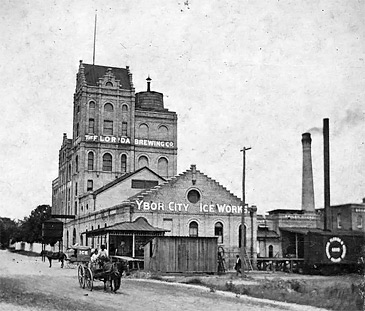
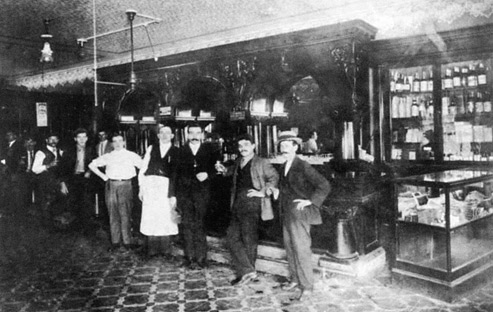
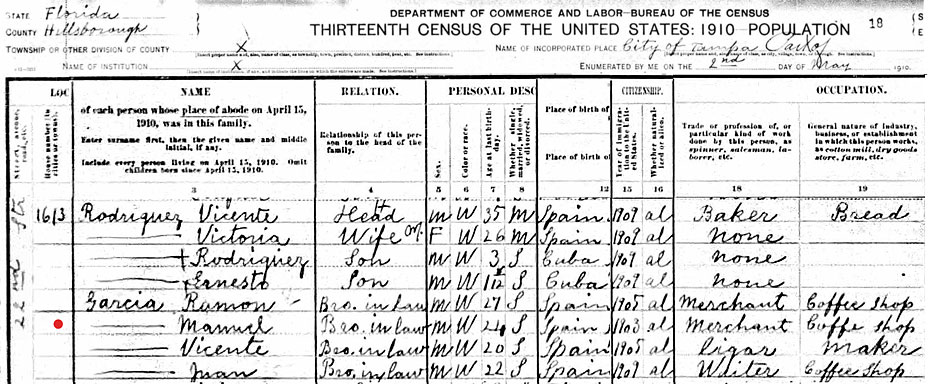

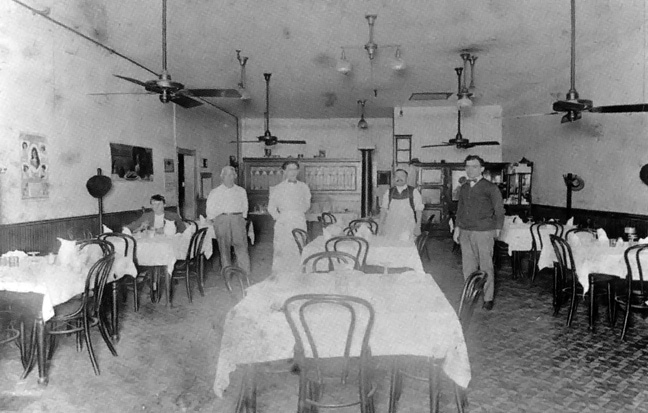
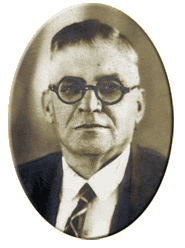
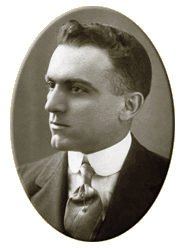
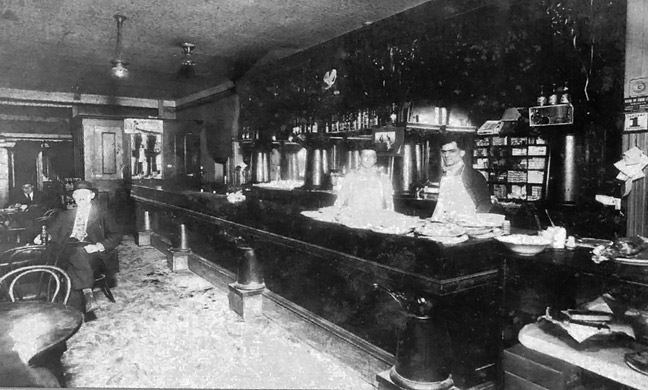
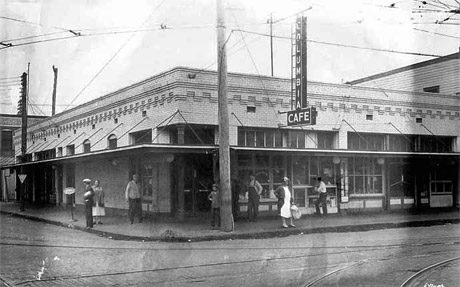
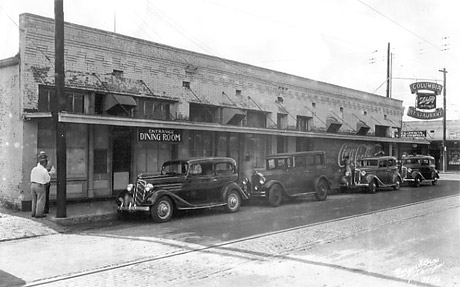
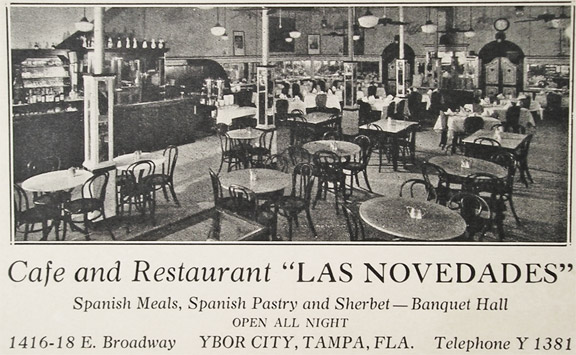
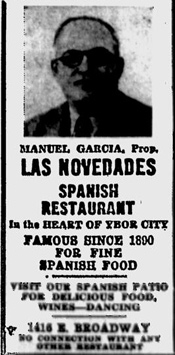
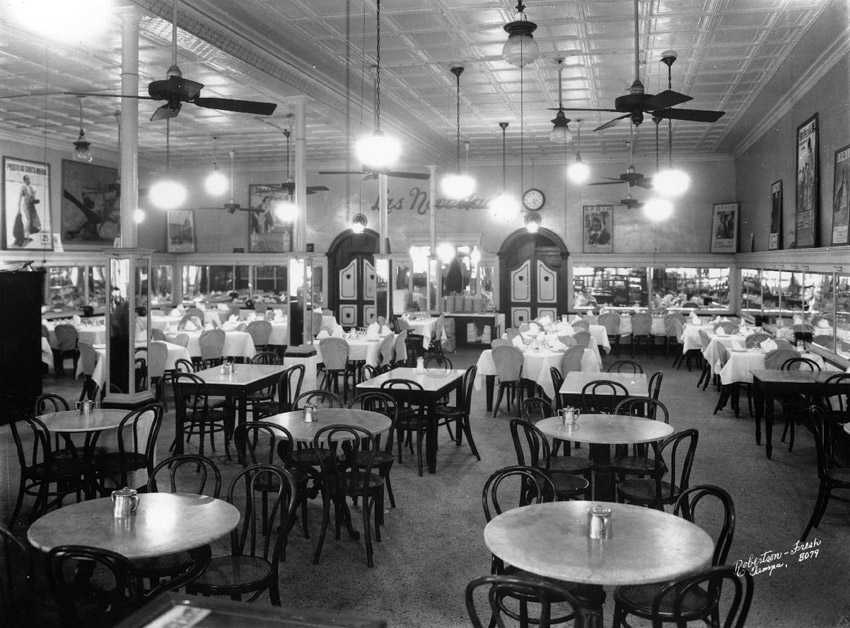
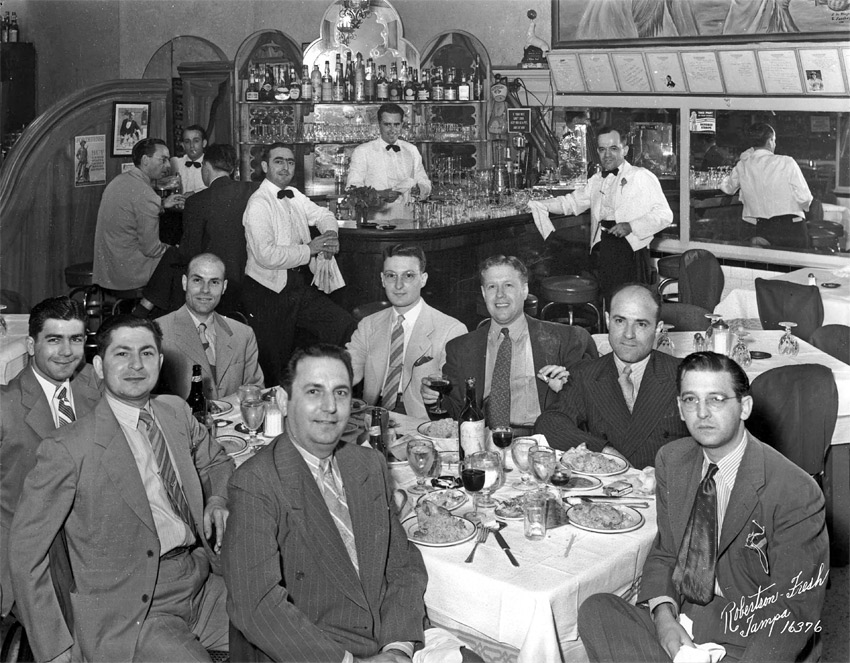

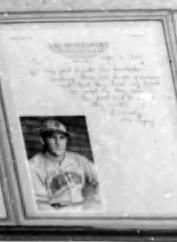
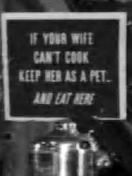
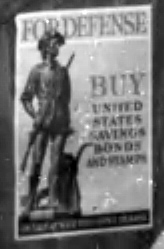
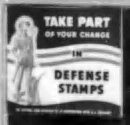
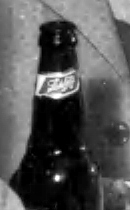
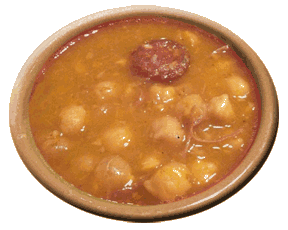 The
Spanish and French pastries made in Las Novedades' own
kitchen are noted for their excellence. Las Novedades
has received so many requests for its pastries to
be mailed, that it now prepares an attractive pastry
package suitable for shipping."
The
Spanish and French pastries made in Las Novedades' own
kitchen are noted for their excellence. Las Novedades
has received so many requests for its pastries to
be mailed, that it now prepares an attractive pastry
package suitable for shipping."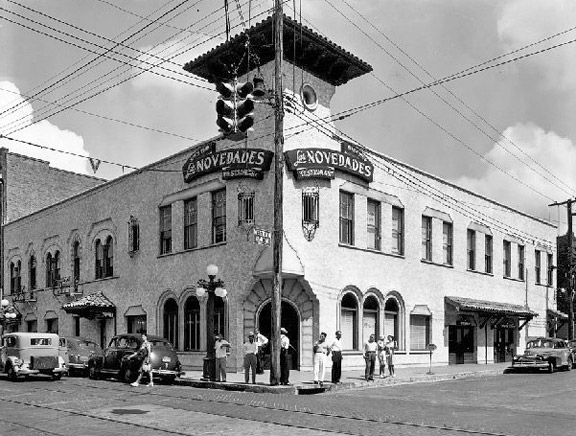
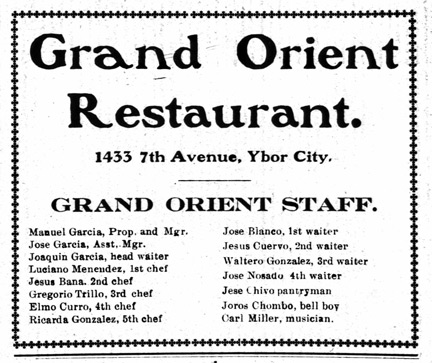
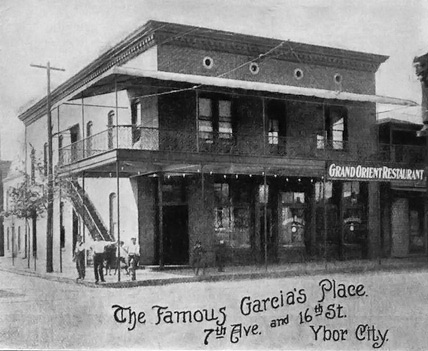
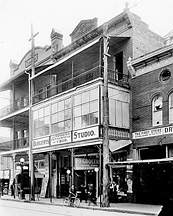
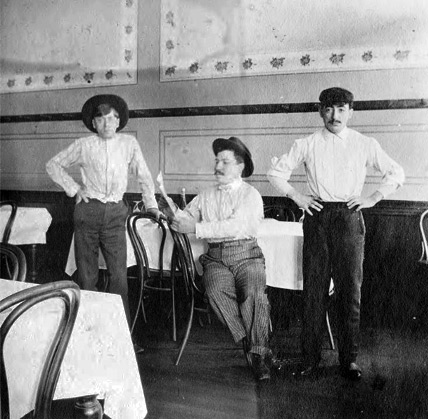
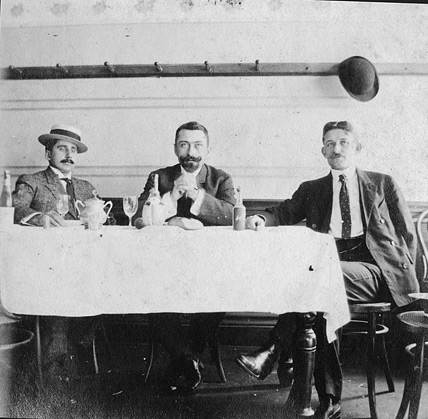
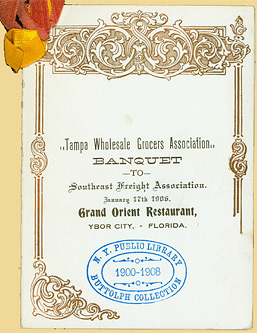
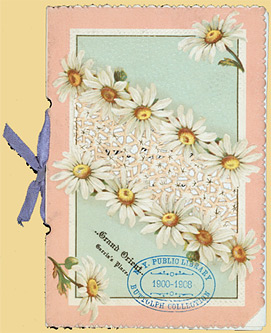
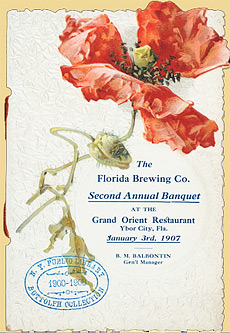
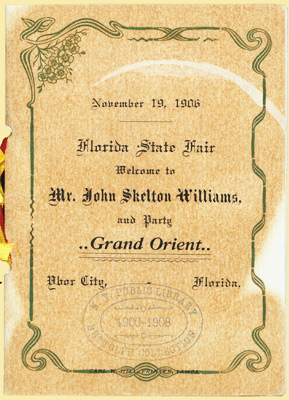
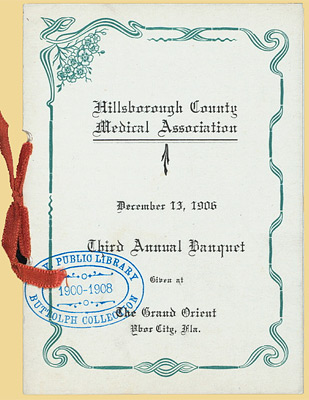
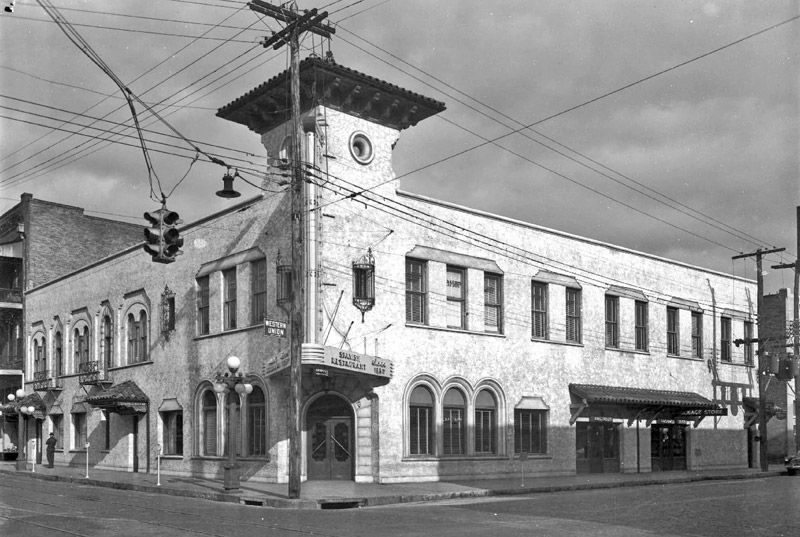
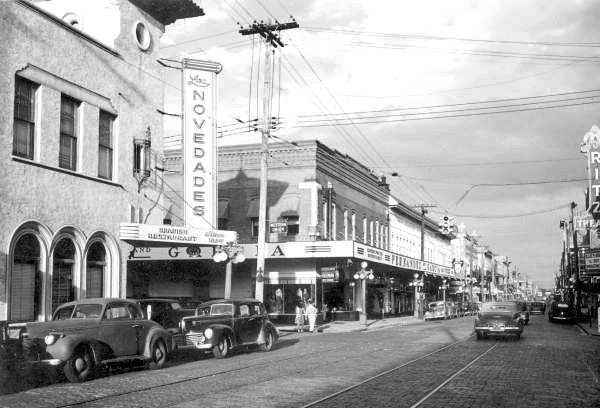
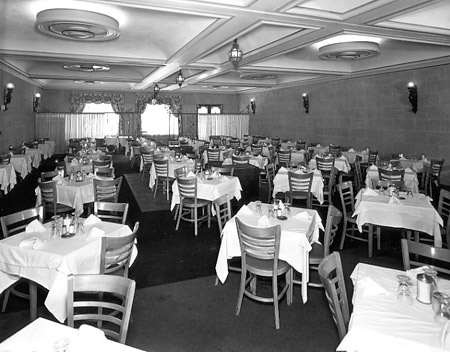
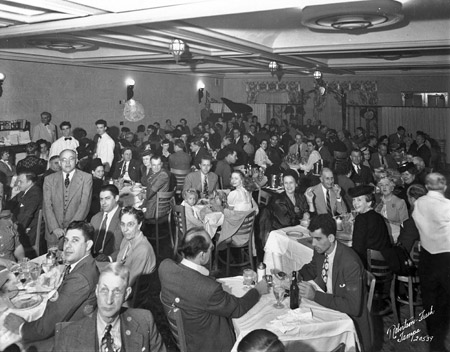
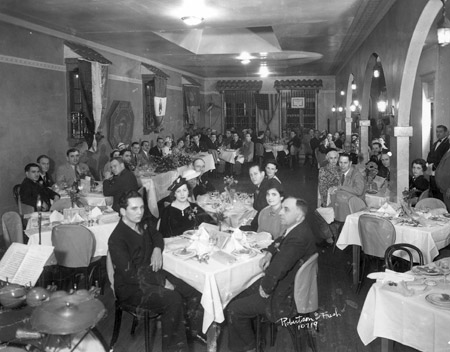
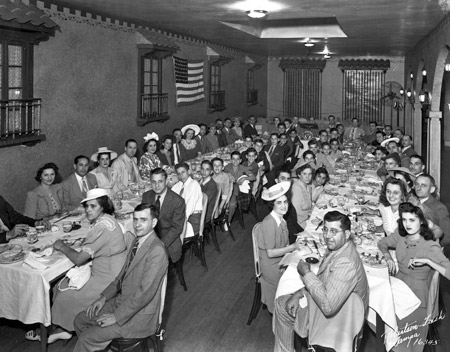
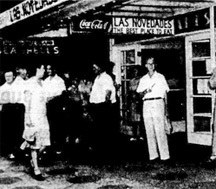 In
the mid 1940s to 1950s, there was a Las Novedades Restaurant in
St. Pete at 738 Central Avenue. Owned by Jesus Aenlle and
Sandalio Ayala, it was not affiliated with Manuel Garcia's
restaurant in Tampa. The St. Pete restaurant did, however,
manage to lure Tampa's Las Novedades top chef to their
establishment in 1945.
In
the mid 1940s to 1950s, there was a Las Novedades Restaurant in
St. Pete at 738 Central Avenue. Owned by Jesus Aenlle and
Sandalio Ayala, it was not affiliated with Manuel Garcia's
restaurant in Tampa. The St. Pete restaurant did, however,
manage to lure Tampa's Las Novedades top chef to their
establishment in 1945.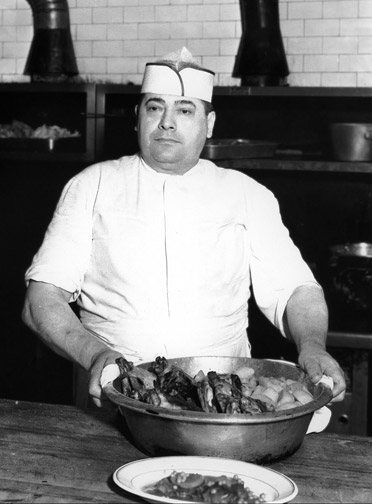
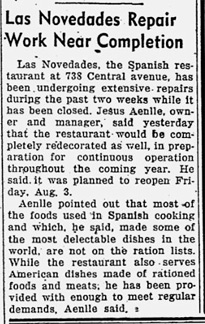
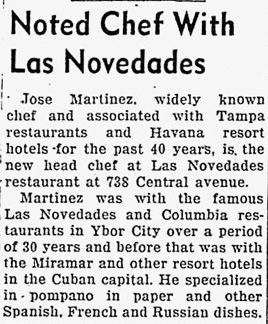
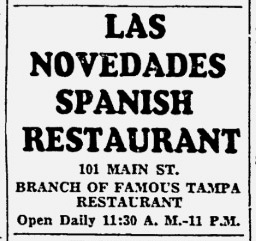
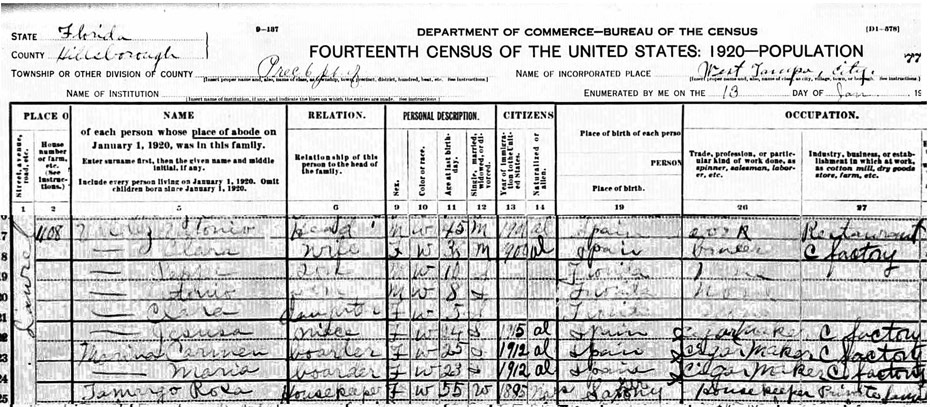
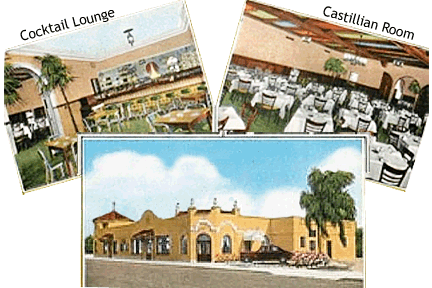
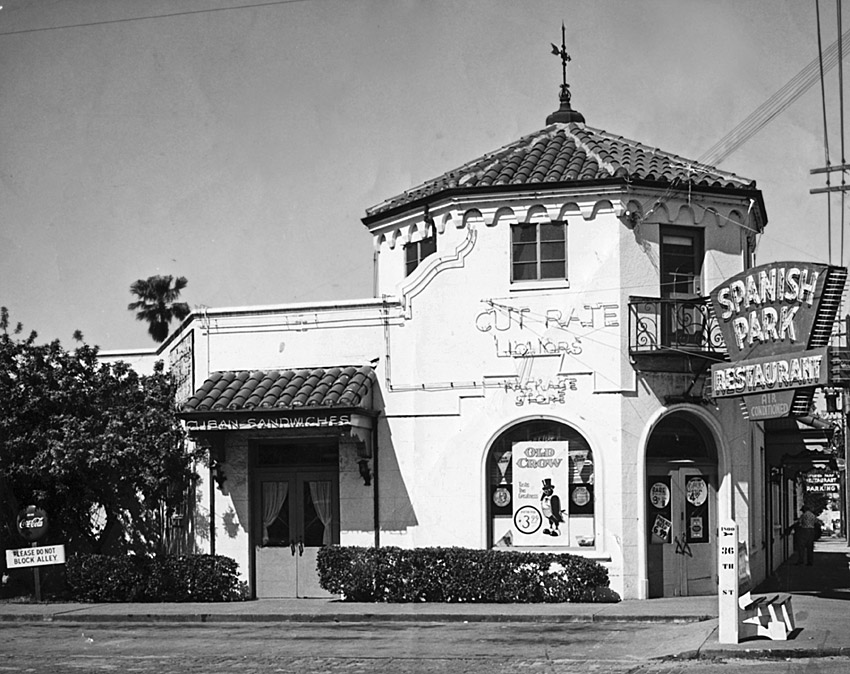
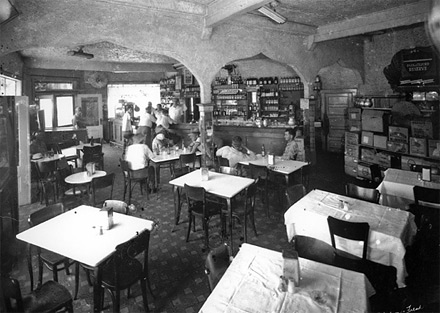
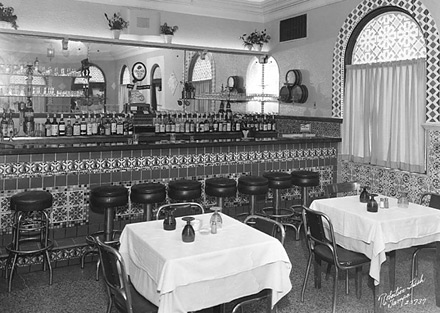
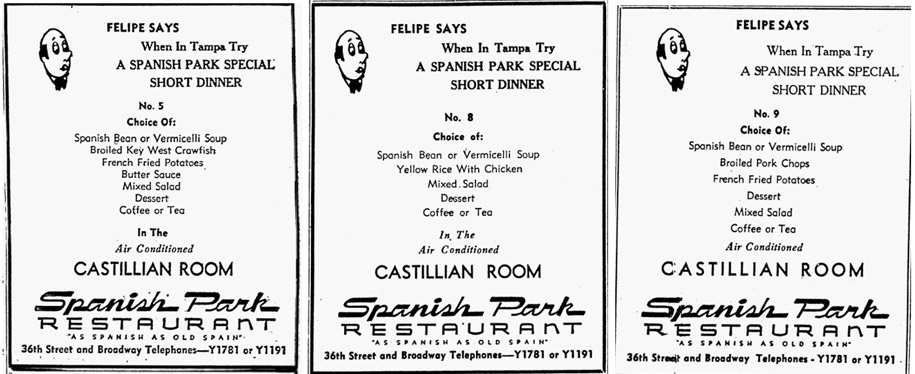
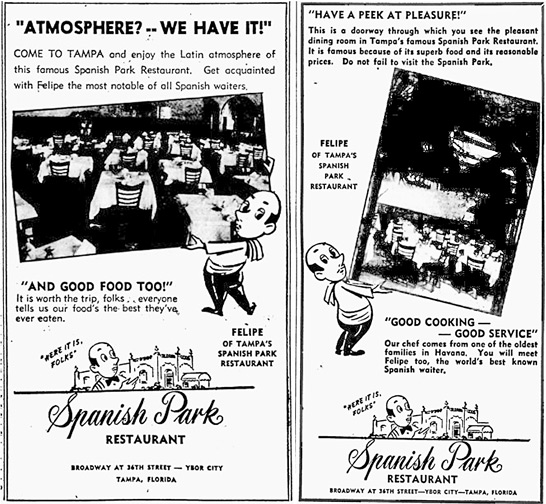
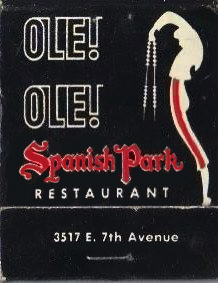
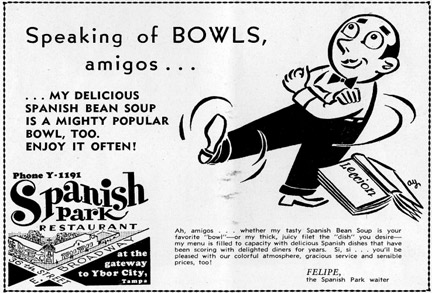


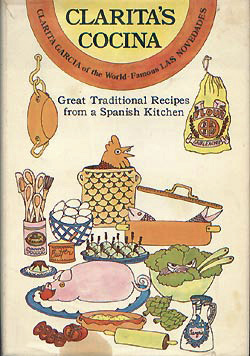
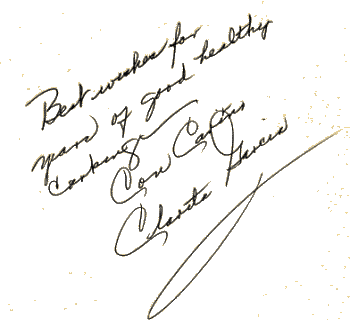
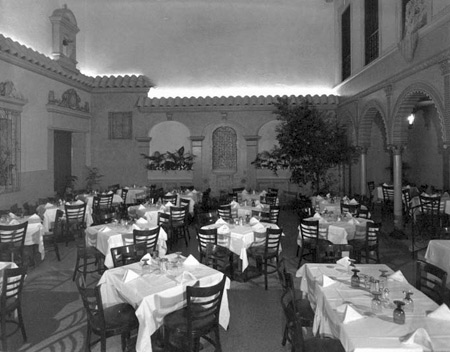
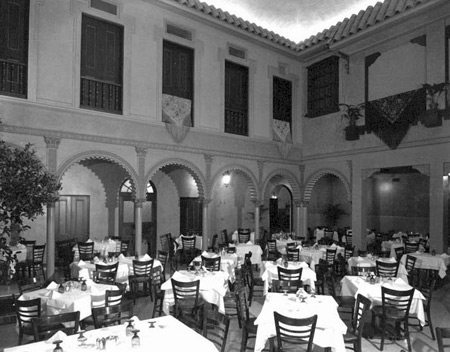
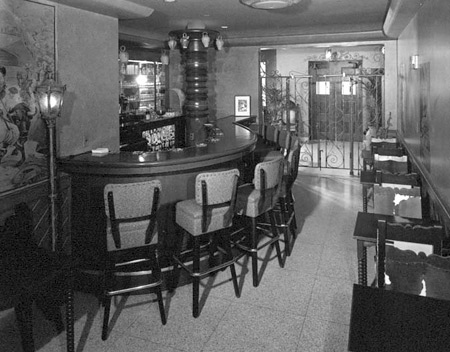
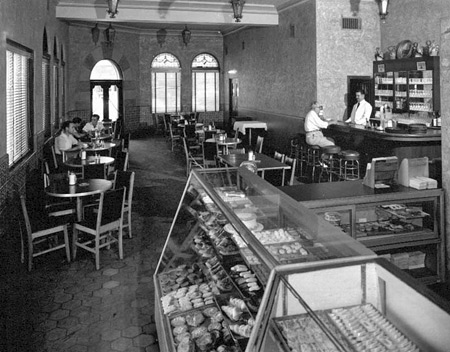
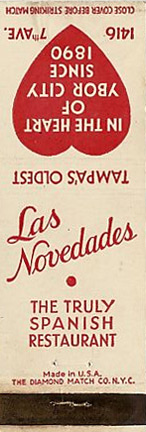
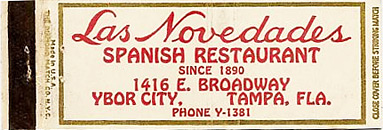
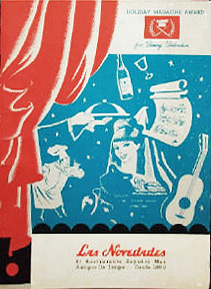
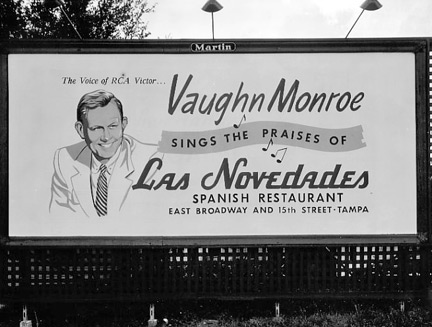
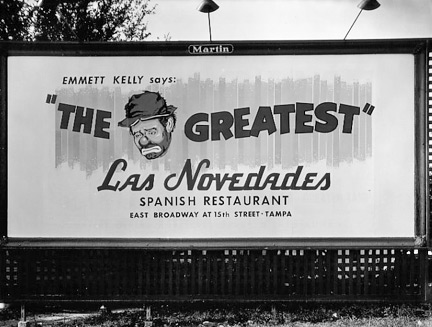
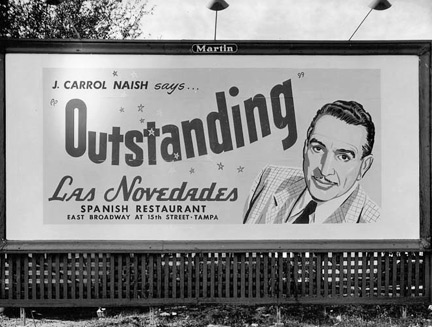
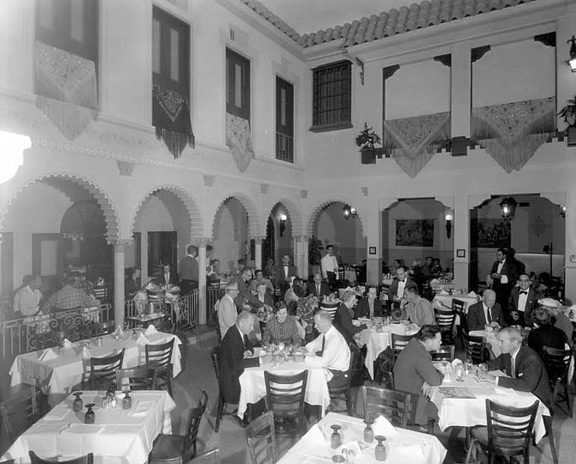
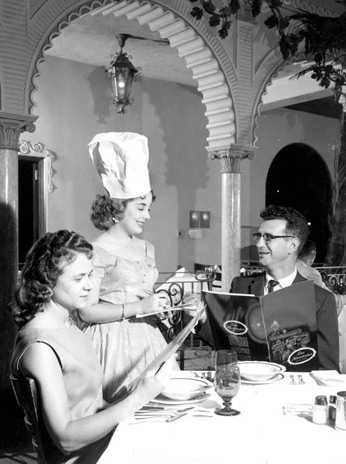
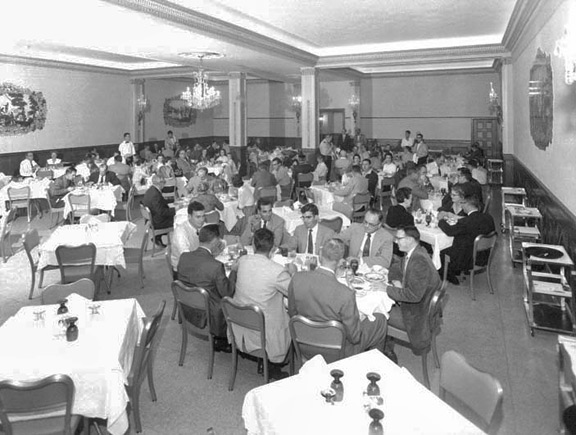


 The
"Steak & Brew" chain (part of the Longchamps organization) was started
by restaurateur
Larry Ellman in the late 1960s. In the fall of 1975, he
filed for Chapter 11 reorganization. He then started
the "Beefsteak
Charlie's" restaurant chain in early 1976. Steak & Brew, Inc.,
was renamed Beefsteak Charlies, Inc. and many Steak & Brew locations
were converted into Beefsteak Charlie's. As the chain first
filed for a trademark on the "Beefsteak Charlie's" name in March 1976,
and no prior trademark existed, it appears there was no direct
connection to the namesake restaurant which inspired the chain.
Despite the similarity to another restaurant, "Steak and Ale", the two
were not related.
The
"Steak & Brew" chain (part of the Longchamps organization) was started
by restaurateur
Larry Ellman in the late 1960s. In the fall of 1975, he
filed for Chapter 11 reorganization. He then started
the "Beefsteak
Charlie's" restaurant chain in early 1976. Steak & Brew, Inc.,
was renamed Beefsteak Charlies, Inc. and many Steak & Brew locations
were converted into Beefsteak Charlie's. As the chain first
filed for a trademark on the "Beefsteak Charlie's" name in March 1976,
and no prior trademark existed, it appears there was no direct
connection to the namesake restaurant which inspired the chain.
Despite the similarity to another restaurant, "Steak and Ale", the two
were not related.
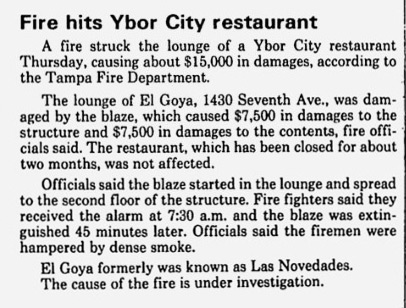
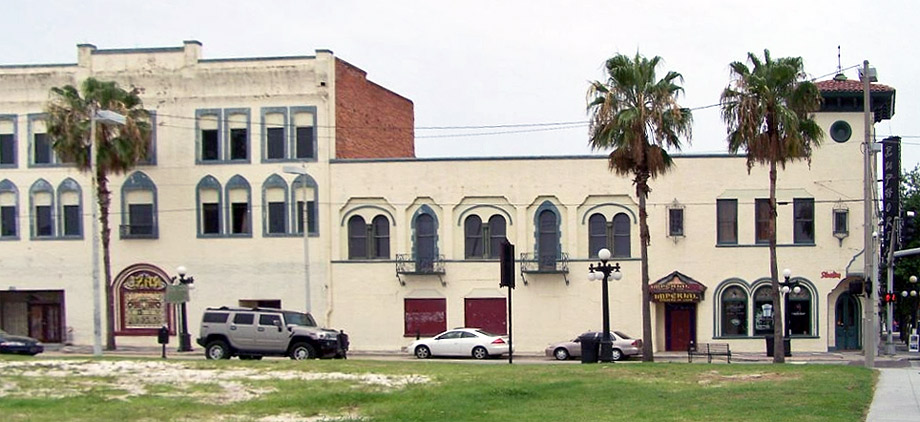
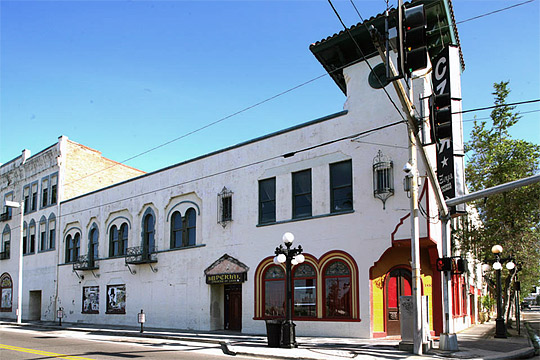 Reported haunting in the old building include footsteps heard in the
upstairs rooms. A male apparition wearing a white suit has been seen
spotted throughout both floors. He has been witnessed smoking a cigar
and the smell of cigar smoke is frequently noticed by employees and
patrons. The ghost of a waiter killed in a knife fight still wanders
the building.
Reported haunting in the old building include footsteps heard in the
upstairs rooms. A male apparition wearing a white suit has been seen
spotted throughout both floors. He has been witnessed smoking a cigar
and the smell of cigar smoke is frequently noticed by employees and
patrons. The ghost of a waiter killed in a knife fight still wanders
the building.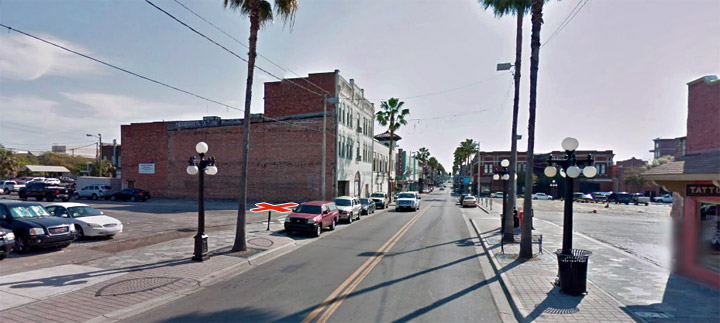
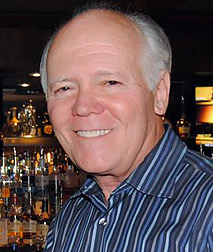
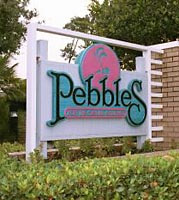 Far more successful was the Pebbles restaurant that he also started in 1986,
opening the first in Longwood. As the menu proudly declared, it was "a special
place to relax and enjoy," "A Casual Neighborhood Drop-In Restaurant" where you
could "mix and match, pass the plates, share the Smoked Tuna Carpaccio, split a
Nutty Cheesy Salad, or just stop in for Spicy Duck Wings and imported ale.
Far more successful was the Pebbles restaurant that he also started in 1986,
opening the first in Longwood. As the menu proudly declared, it was "a special
place to relax and enjoy," "A Casual Neighborhood Drop-In Restaurant" where you
could "mix and match, pass the plates, share the Smoked Tuna Carpaccio, split a
Nutty Cheesy Salad, or just stop in for Spicy Duck Wings and imported ale. 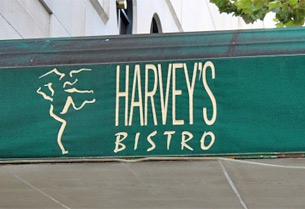
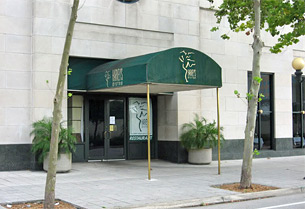 On the ground floor of Orlando's Barnett Bank building, Manny opened
Harvey's Bistro in 1993 and the following year, on the penthouse
level, the 28th floor,
Manuel's on the 28th. The first was an instant hit with the downtown
business community looking for a reliable spot to do lunch and light
dinners, and Manuel's, the name honoring Manny's father, was an oasis
for those looking for a sophisticated setting and formal service.
On the ground floor of Orlando's Barnett Bank building, Manny opened
Harvey's Bistro in 1993 and the following year, on the penthouse
level, the 28th floor,
Manuel's on the 28th. The first was an instant hit with the downtown
business community looking for a reliable spot to do lunch and light
dinners, and Manuel's, the name honoring Manny's father, was an oasis
for those looking for a sophisticated setting and formal service. 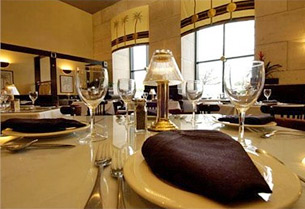 Manuel's
numerous awards included the CitySearch Special Occasion Dining Award in 2006,
the Audience View award in 2004, the Orlando Sentinel Foodie Award in 2009,
and Frommer's Very Highly Recommended in 2009.
Manuel's
numerous awards included the CitySearch Special Occasion Dining Award in 2006,
the Audience View award in 2004, the Orlando Sentinel Foodie Award in 2009,
and Frommer's Very Highly Recommended in 2009.